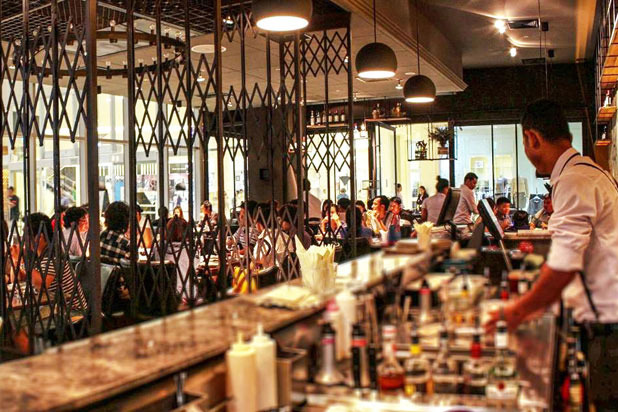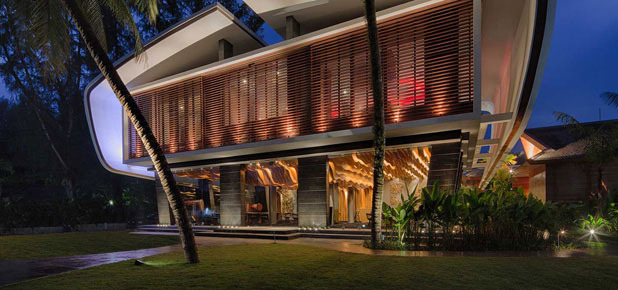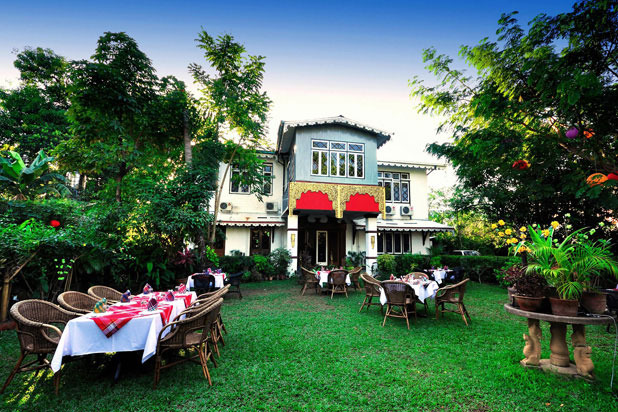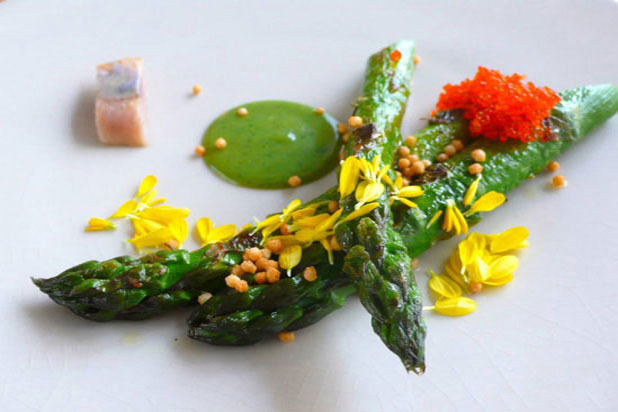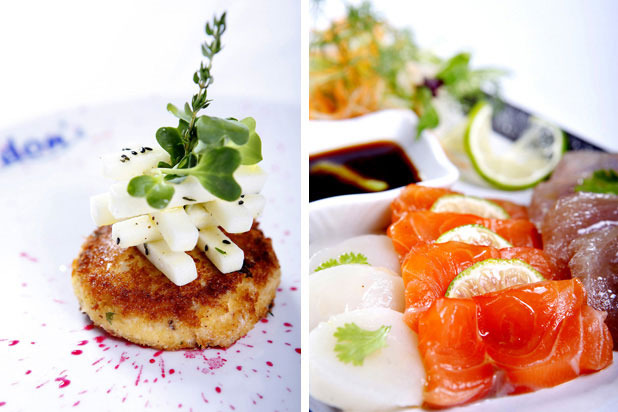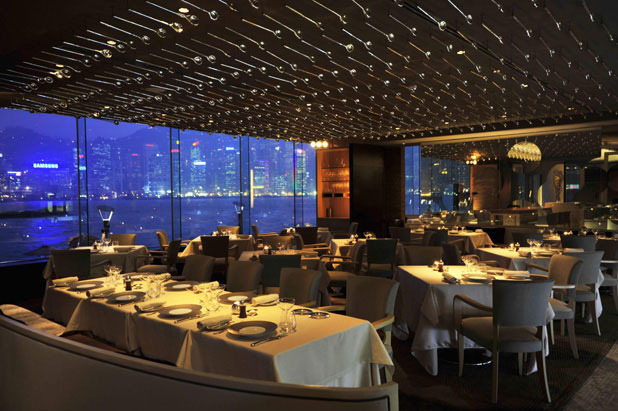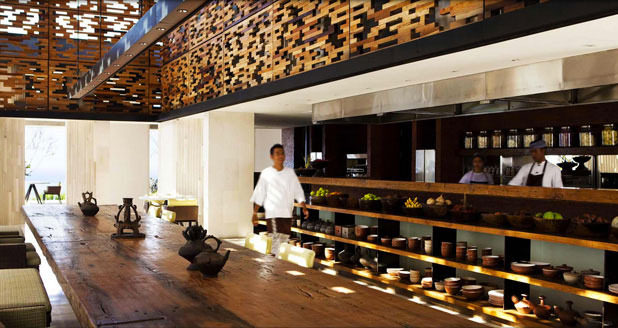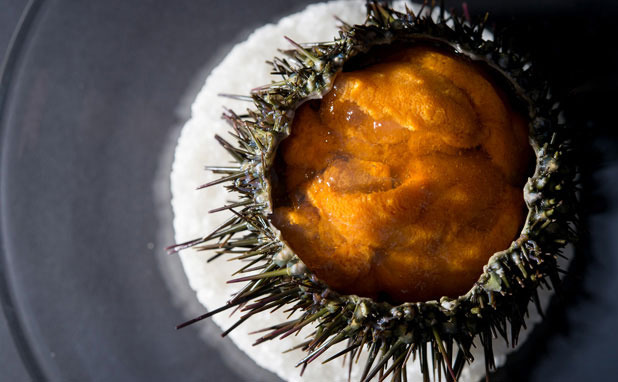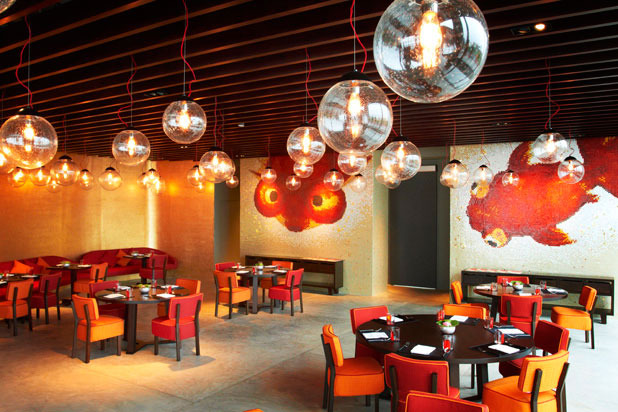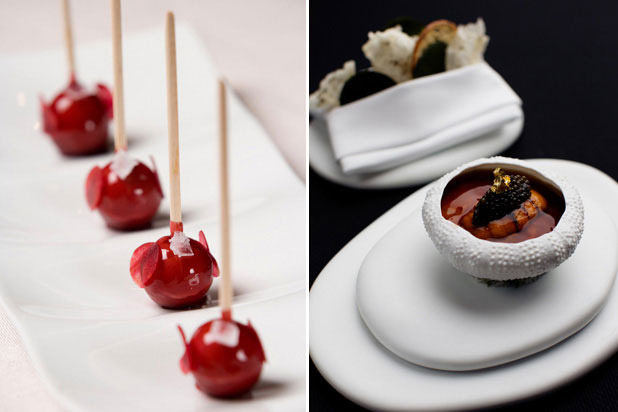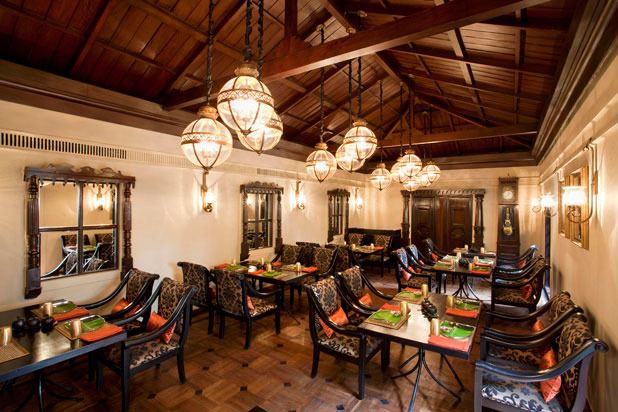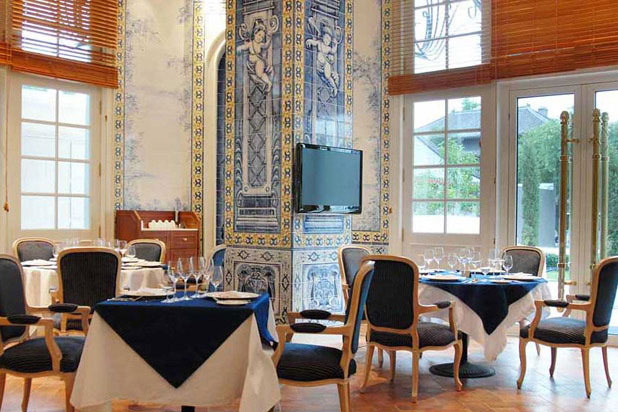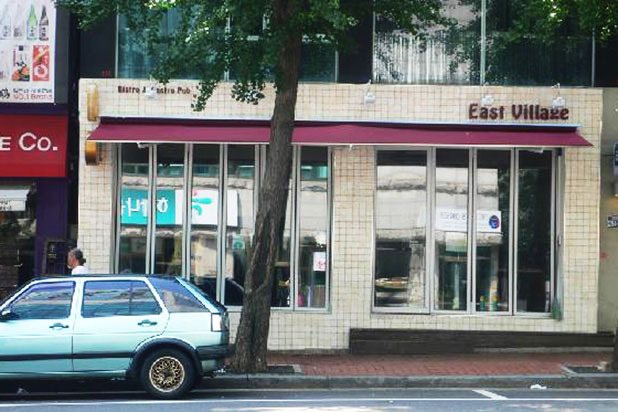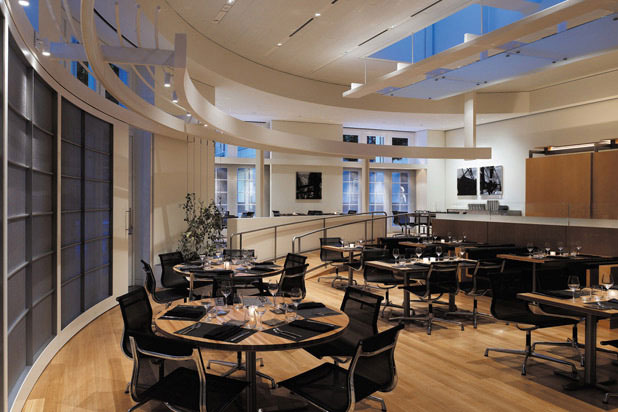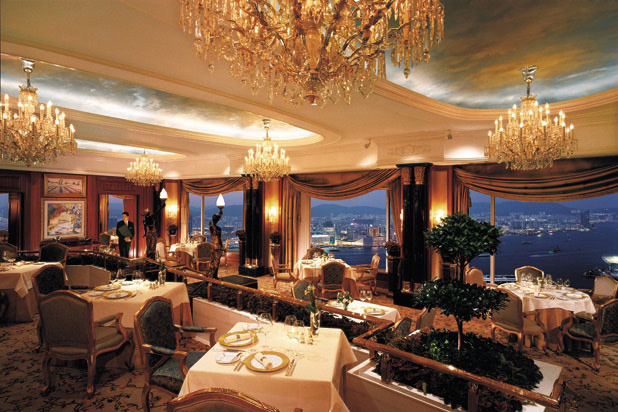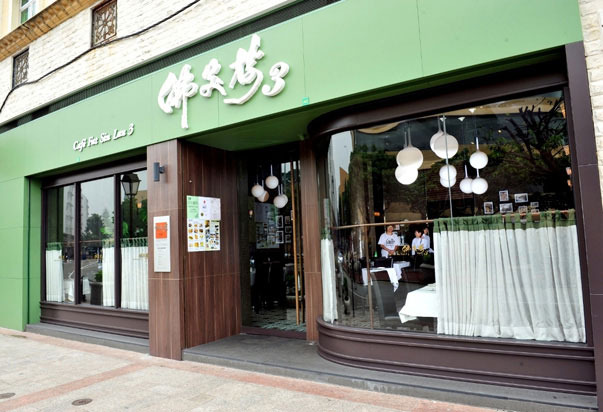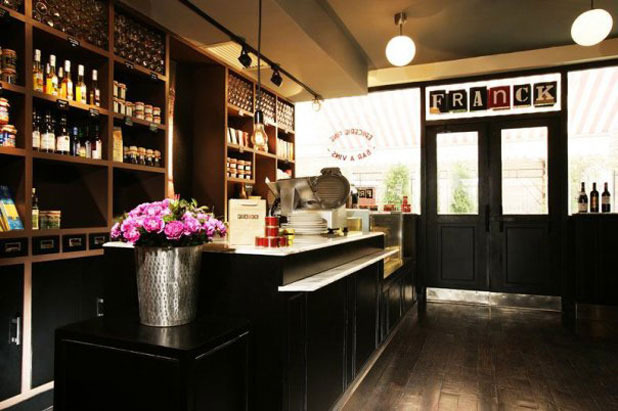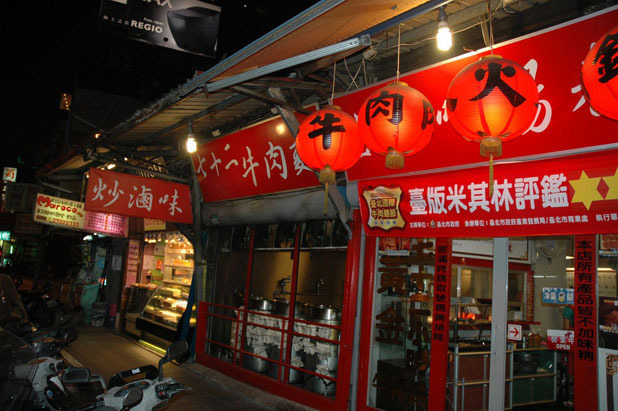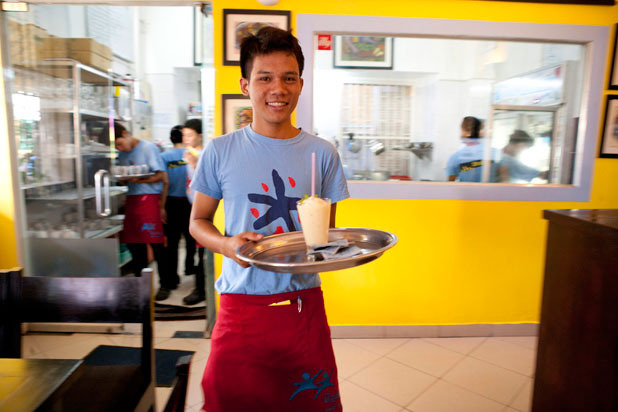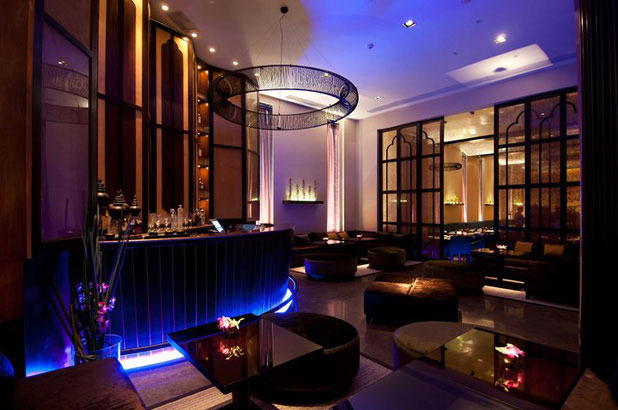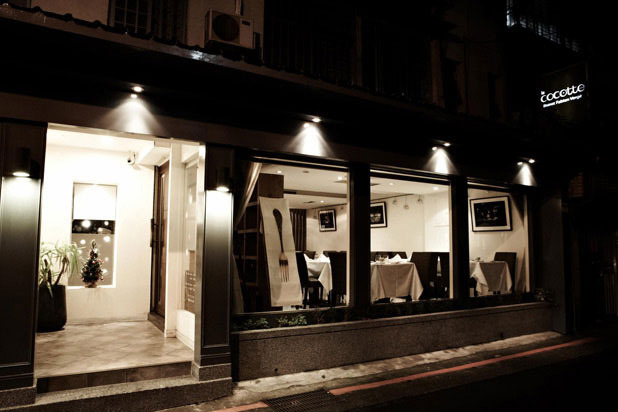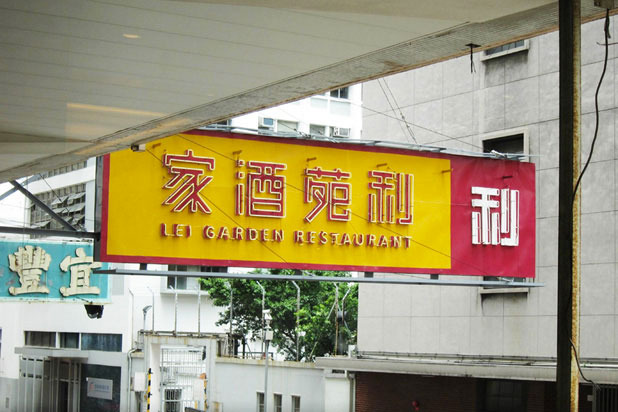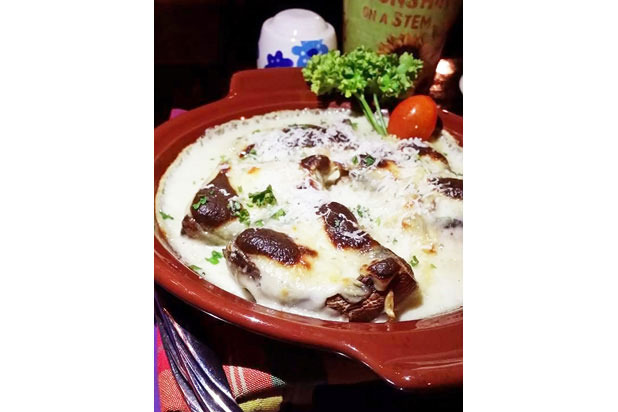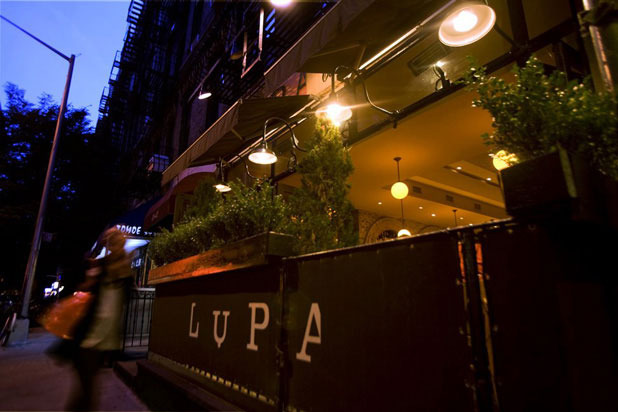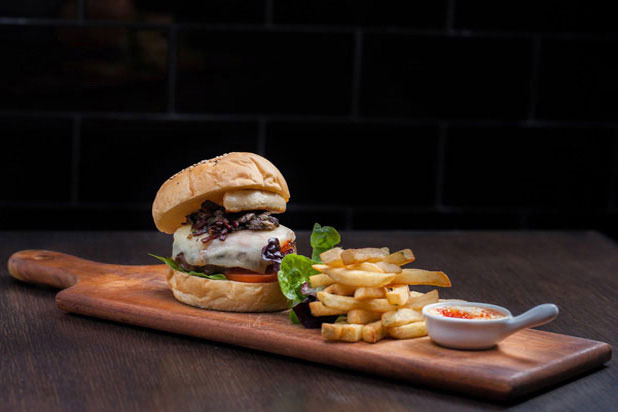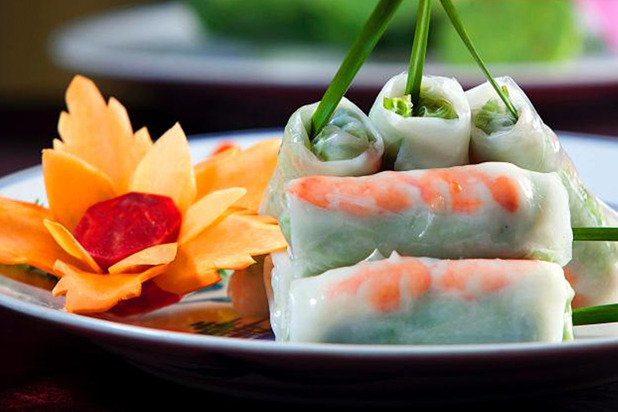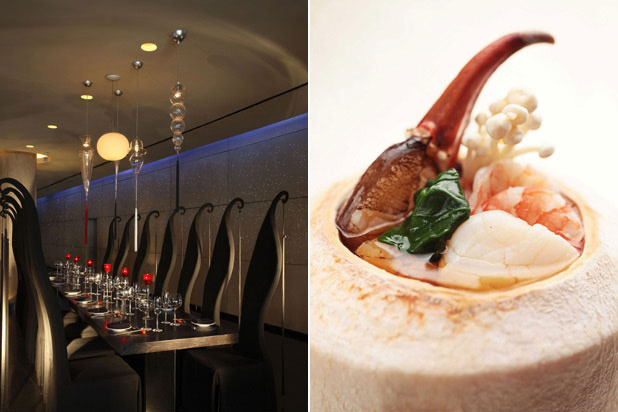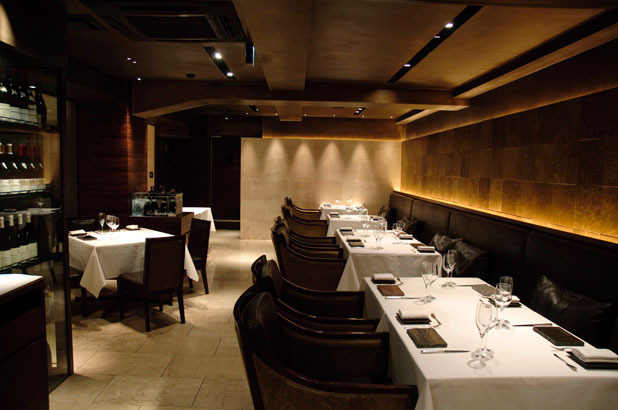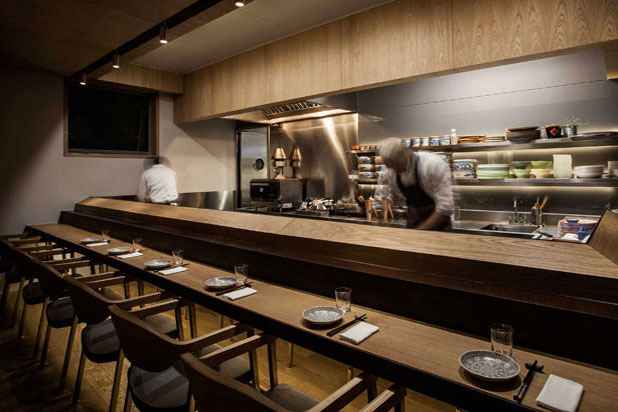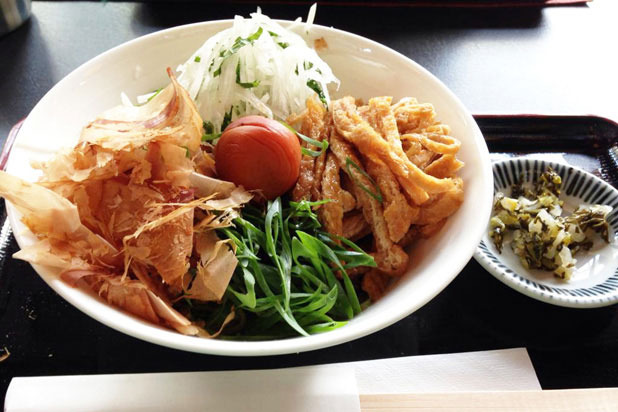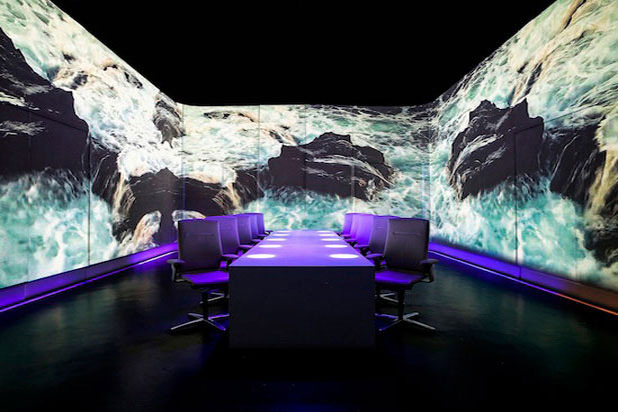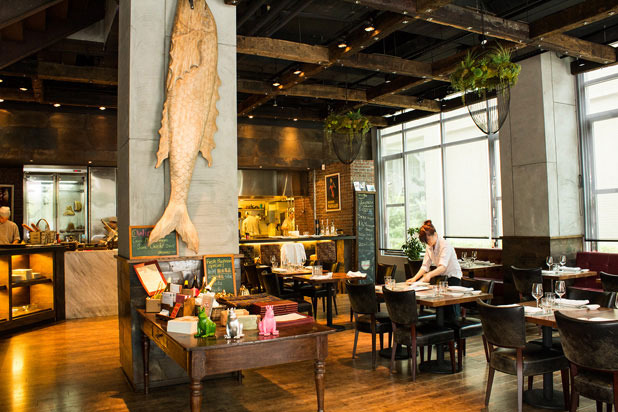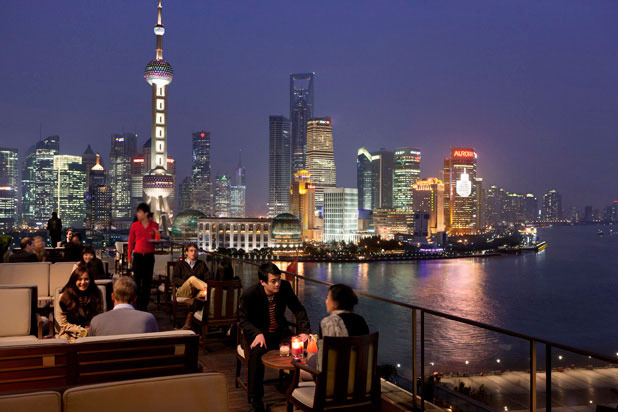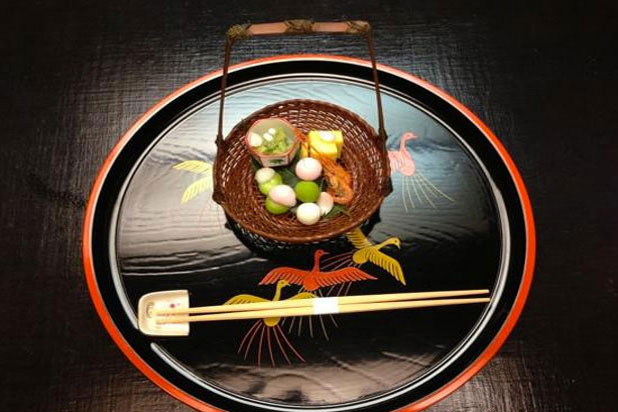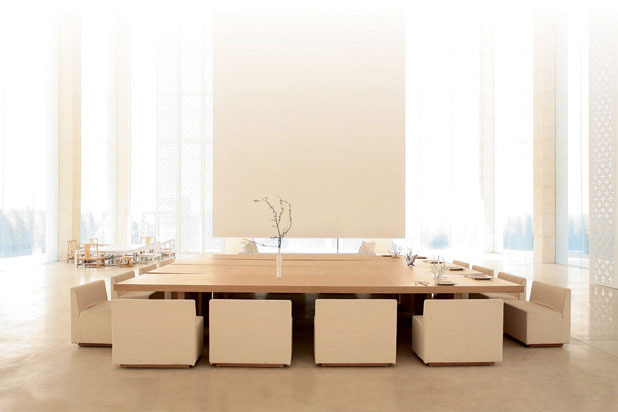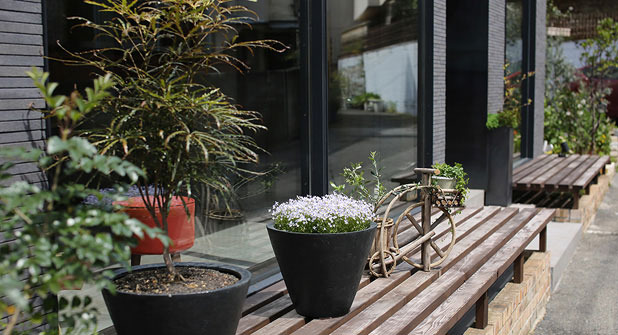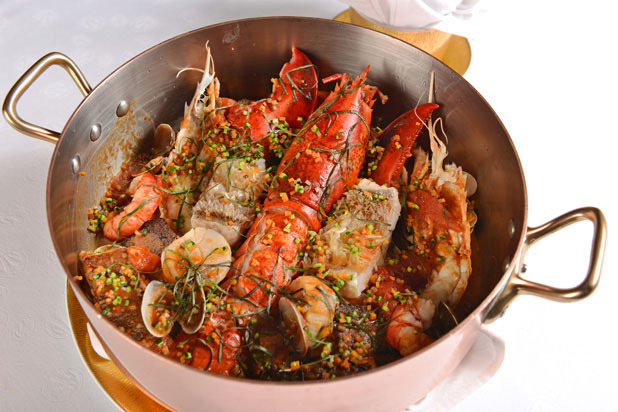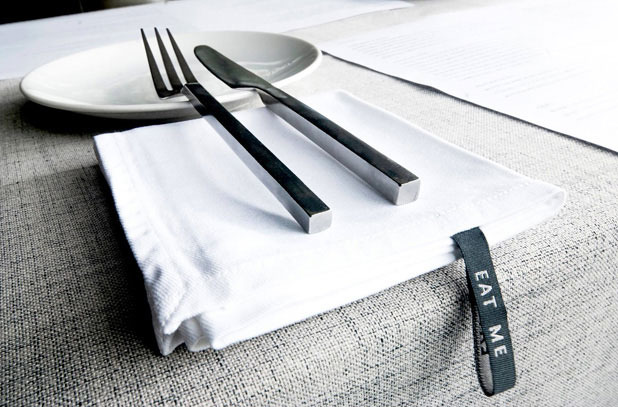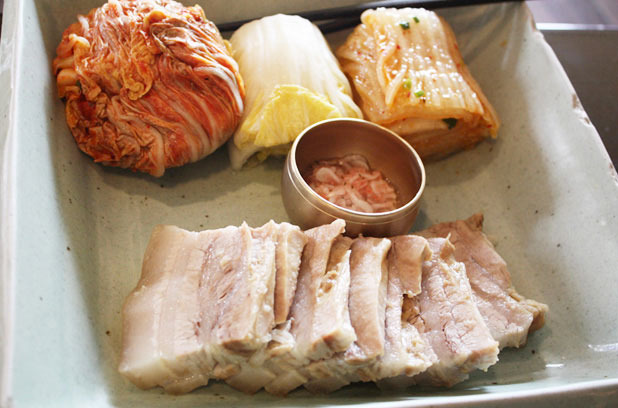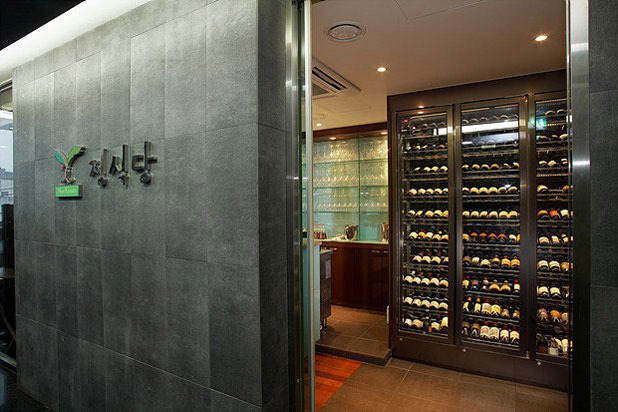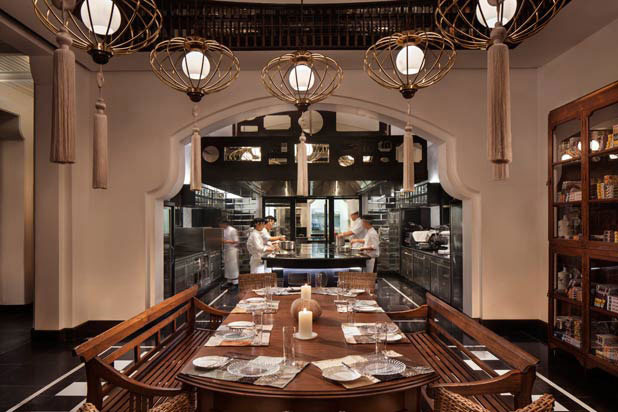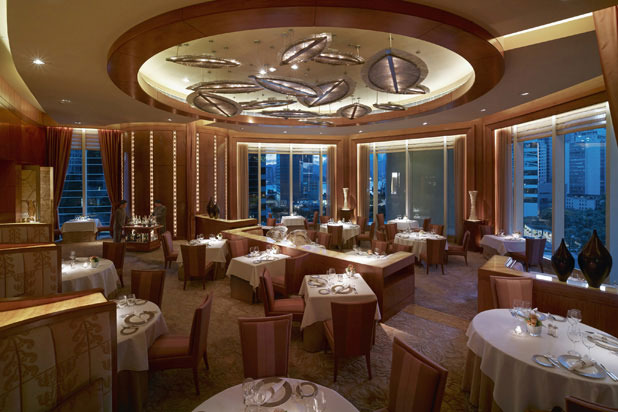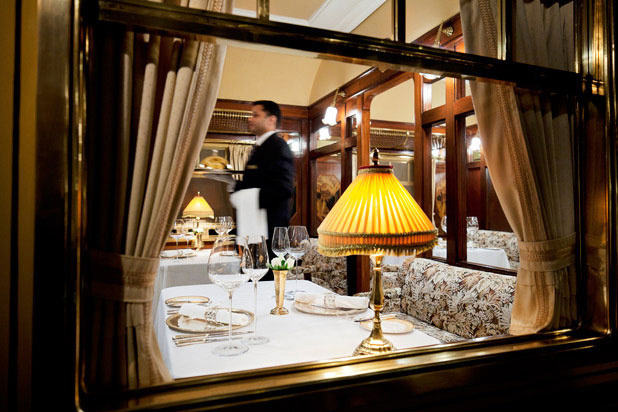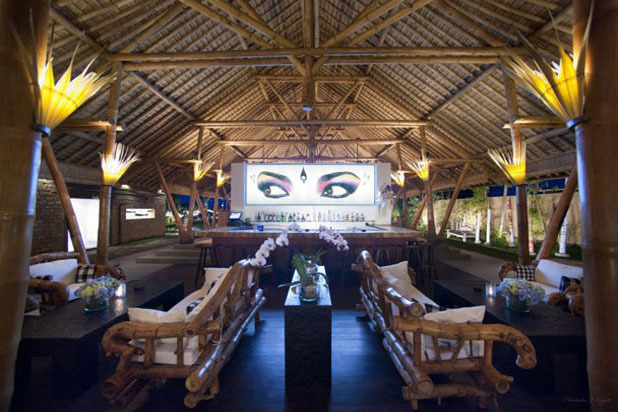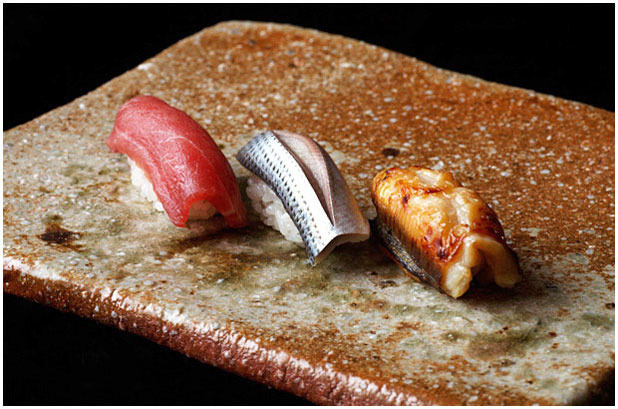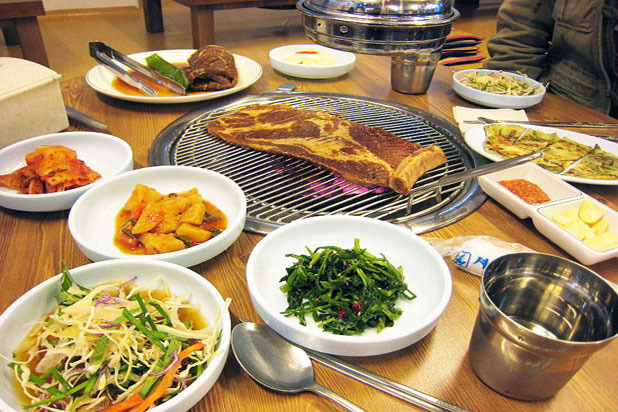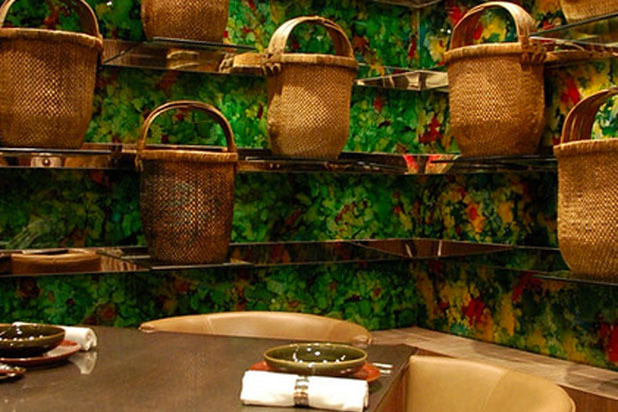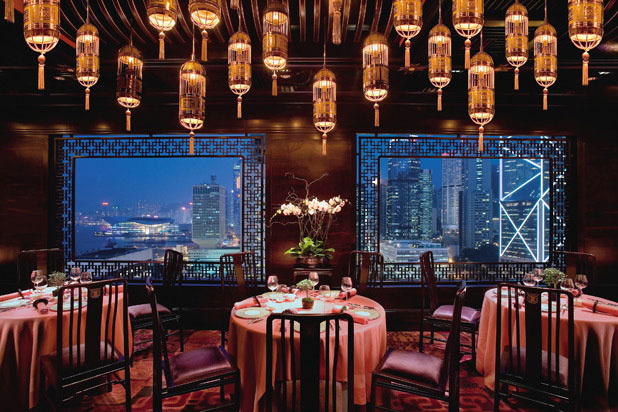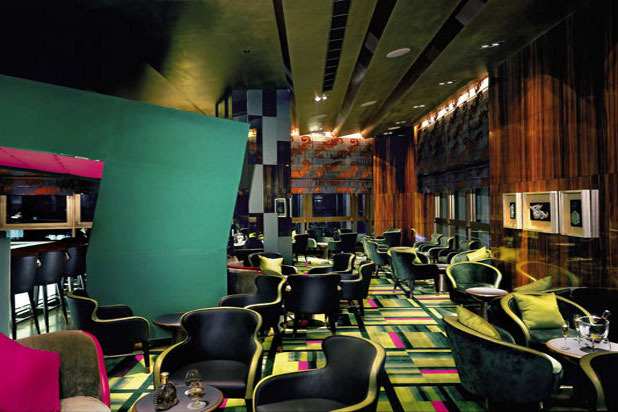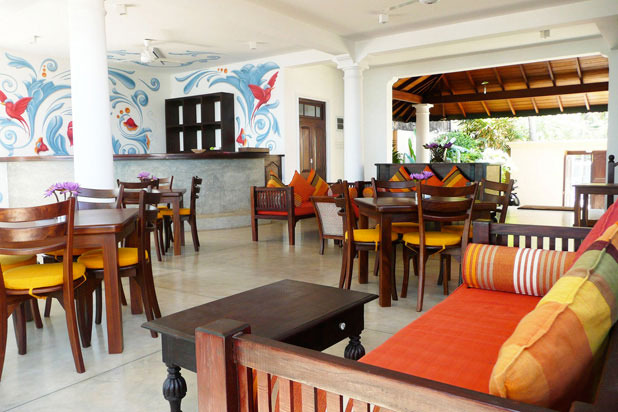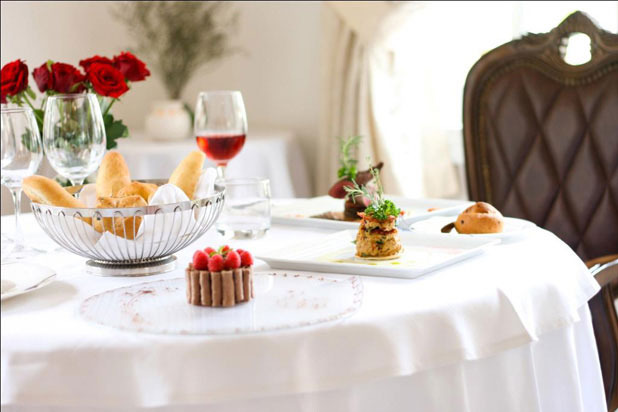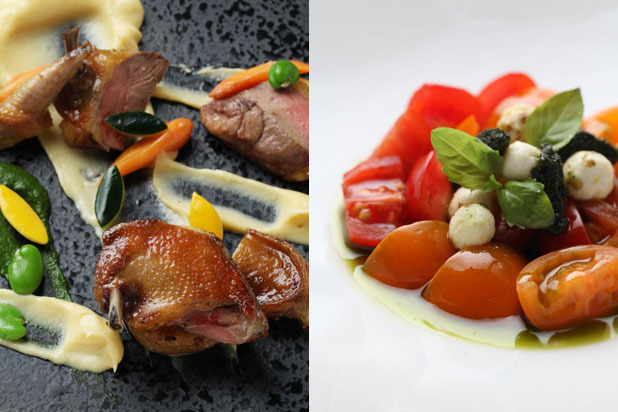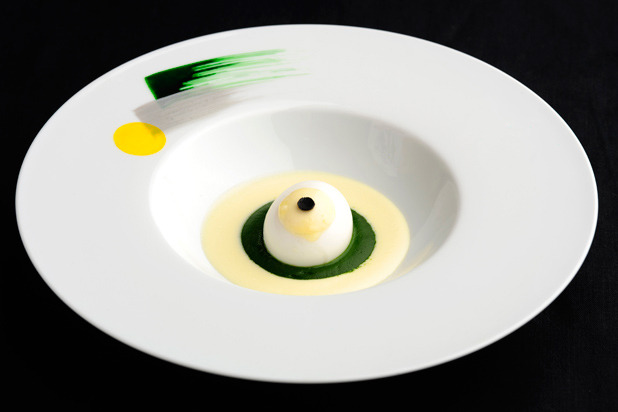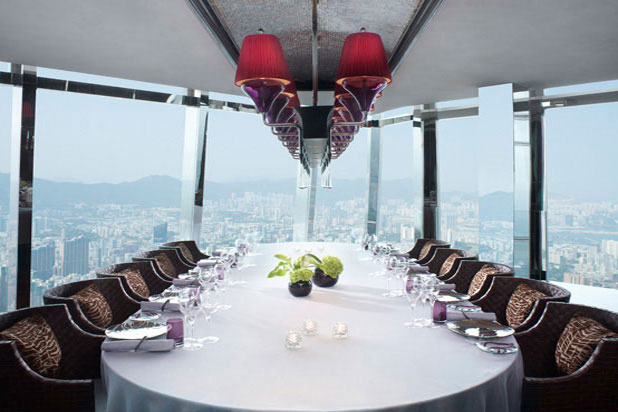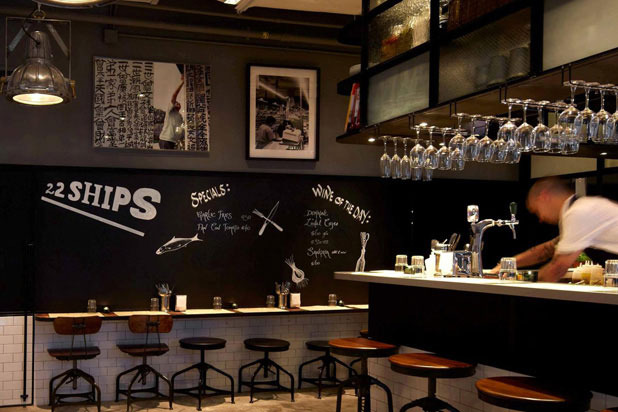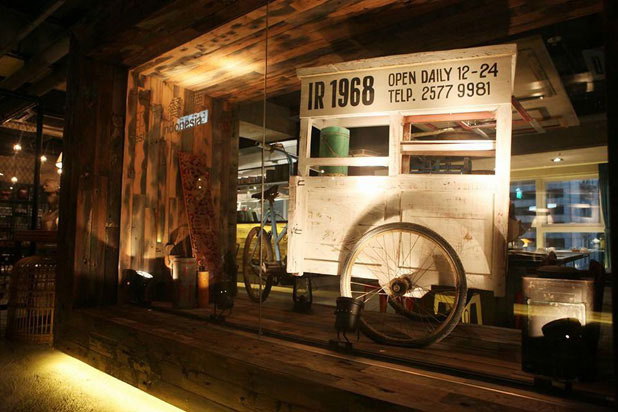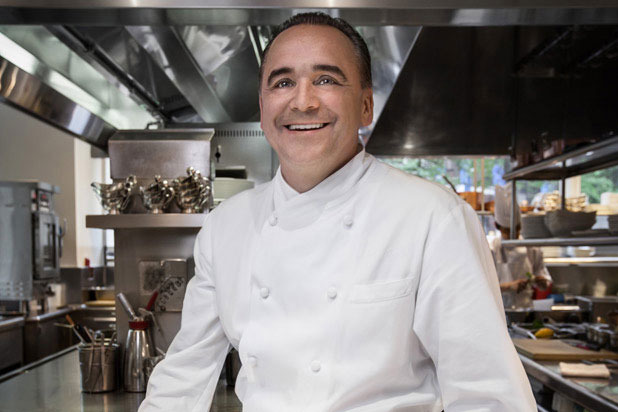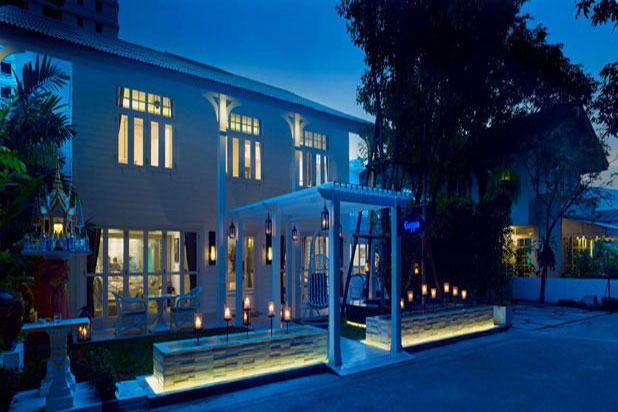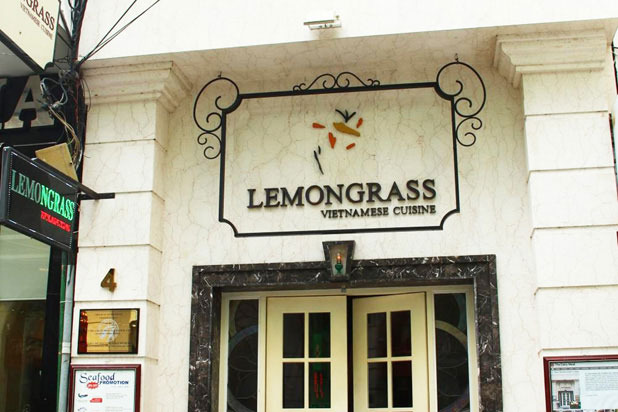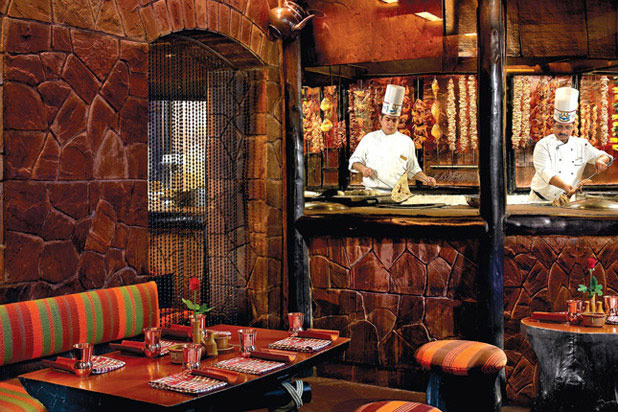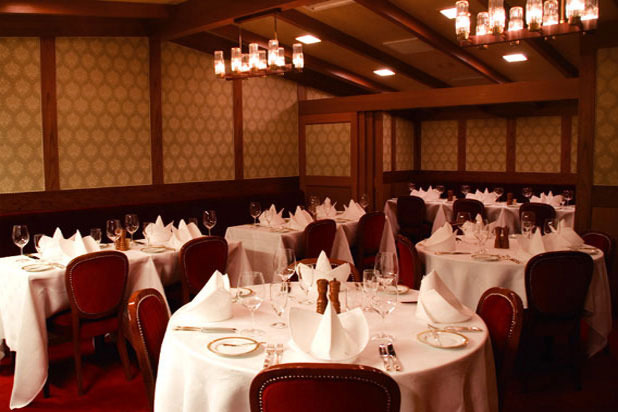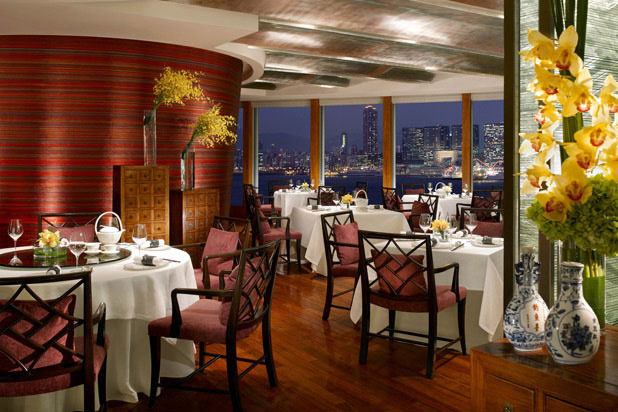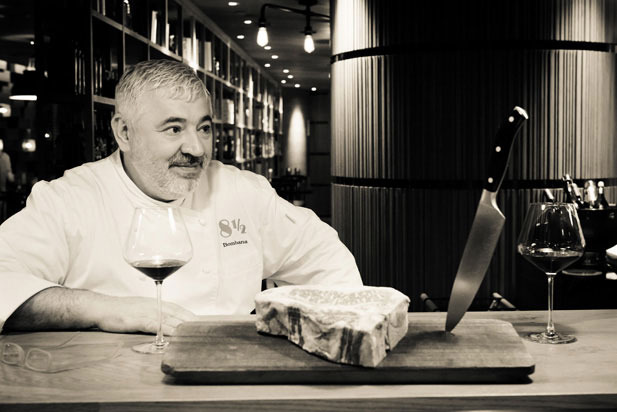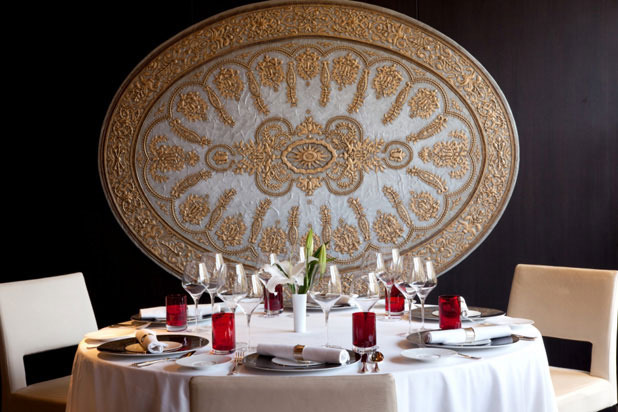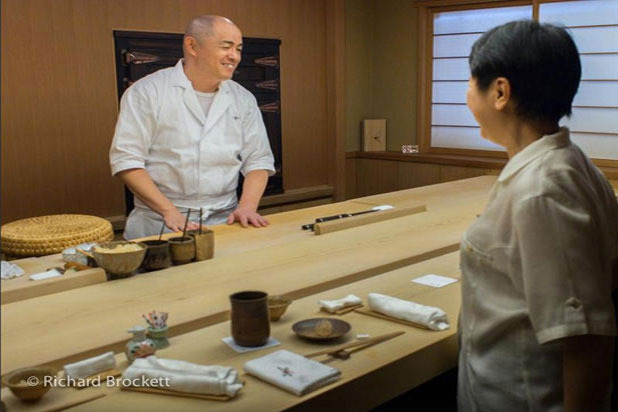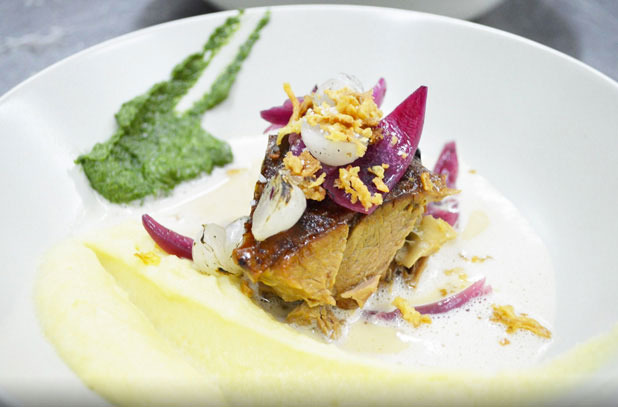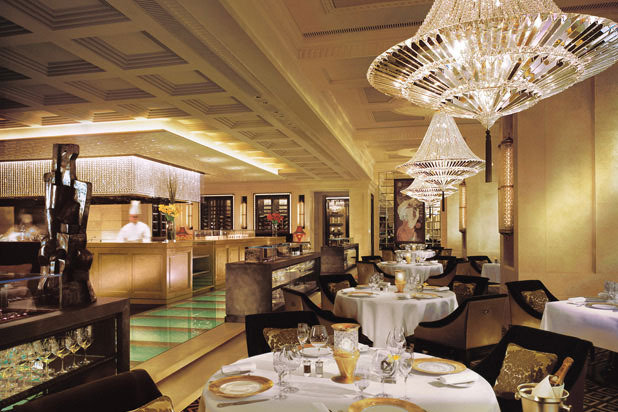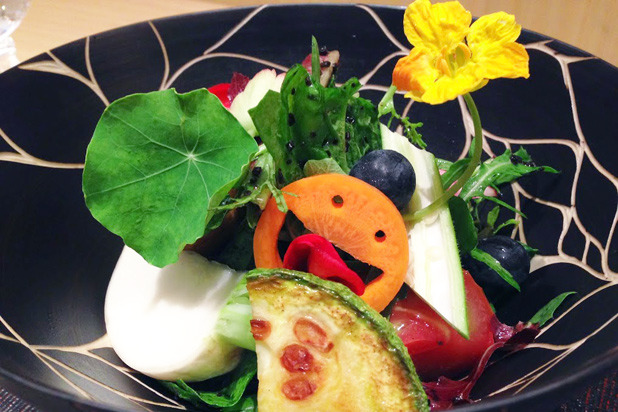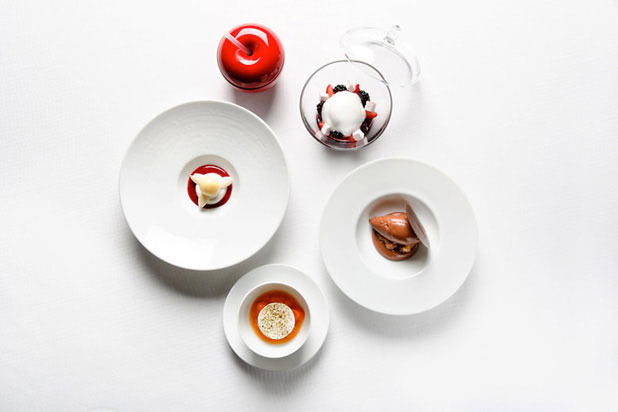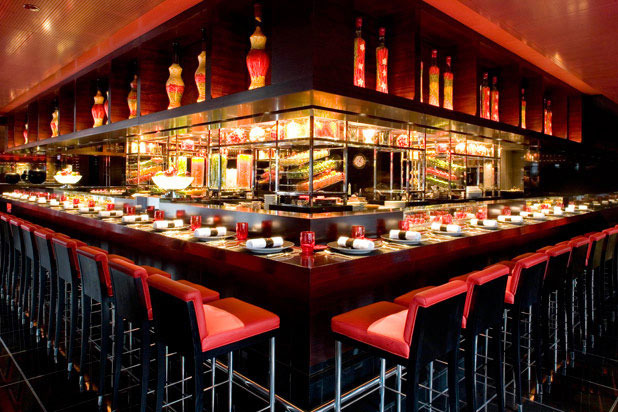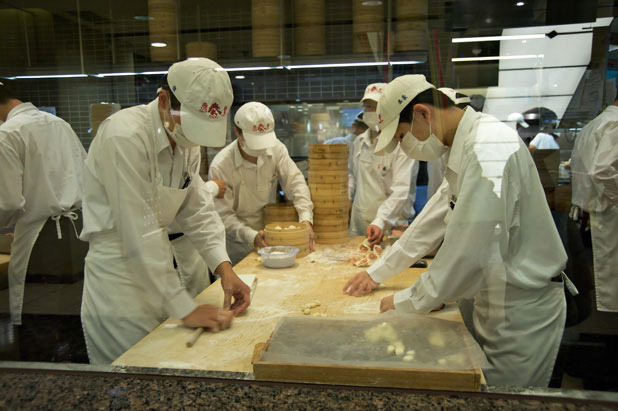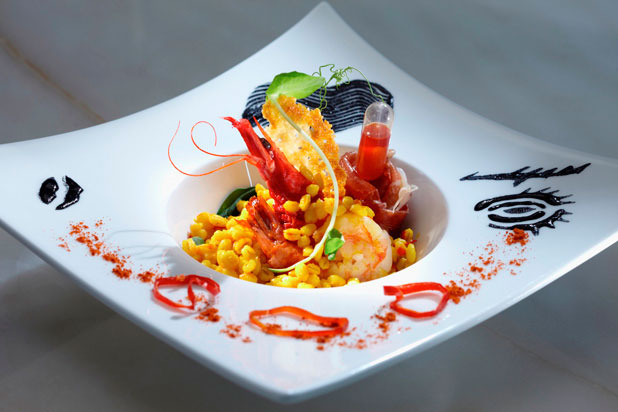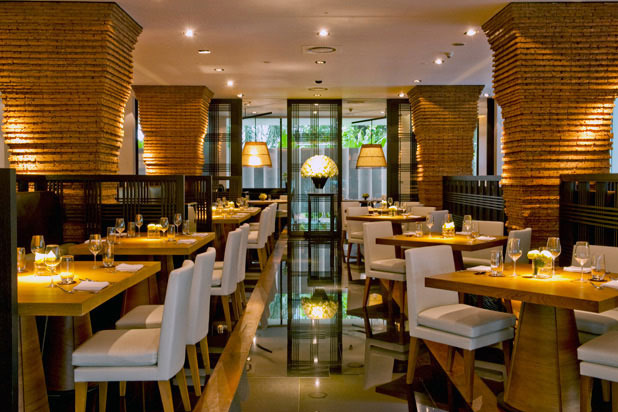101 Best Restaurants In Asia
We may receive a commission on purchases made from links.
The Daily Meal celebrates the most exemplary epicurean endeavors on the Asian continent.
101. Fox Wine Bistro (Phnom Penh, Cambodia)
With an impressive wine list featuring over 400 choices and an intimate setting with modern, minimalist décor, Fox Wine Bistro aims to stand out. While wine is a big focus here, the menu features a selection of well-cooked Italian-inspired dishes that pair well with wine. Creamy gorgonzola pasta, grilled squid and octopus salad, beef kebabs with grilled vegetables, and cheese plates are a few of the offerings.
100. Aziamendi (Phuket, Thailand)
Located just steps away from the fine sand and turquoise water of Natai beach and a 20-minute drive from Phuket International Airport, Aziamendi is the fine-dining restaurant at the luxury resort Inalia Beach House. Under the supervision of Michelin three-star Basque chef Eneko Atxa — whose restaurant in Bilbao is the similarly named Azurmendi — Aziamendi offers diners a choice of three fixed-price menus, one paying homage to the Bilbao restaurant, one focusing on Thai ingredients and flavors, and one for vegetarians. While the particulars change constantly, dishes previously featured include truffled egg (an egg yolk injected with black truffle jus); Basque baby squid and pigeon with hazelnuts and foie gras; and suckling pig with pumpkin noodles and dashi. While the restaurant is currently closed, it will open again for the season on November 1 of this year.
99. Padonmar Restaurant (Yangon, Myanmar)
Myanmar (formerly Burma) has never been known for its restaurants, but it has a strong home-cooking tradition, heavy on seafood and vegetables, Incorporating such ingredients as bamboo leaves, pickled tea leaves, rosella leaves (from a kind of hibiscus), and winged beans, and influenced by the cuisines of its neighbors, Thailand, India, and China. Translating the country's specialties from the private kitchen to a professionally run eating place has been the mission of U Sonny Aung Khin for more than a decade at Padonmar, occupying an old mansion in Yangon (Rangoon). In upscale folkloric surroundings, Khin's chefs offer both Thai specialties and a large selection of traditional local dishes, but with the excessive peanut oil and MSG commonly found in Burmese cooking greatly reduced. Try the tangy fish soup or rosella soup with tomatoes, pickled tea leaf and ginger salad, shrimp paste with tamarind and chiles, or minced mutton with mint and spices, and discover a whole new range of Southeast Asian flavors.
98. Serge et le Phoque (Hong Kong)
Opened in August of 2013, Serge et le Phoque has quickly become a go-to destination for modern French fare in Hong Kong's Wan Chai district. With a produce-focused menu, carefully crafted wine list, and casual setting, the restaurant succeeds in creating a Parisian feeling in the midst of this Asian metroplois. Diners can choose between two set menus, the shorter Le Petit Serge or longer Grand Phoque, which change daily. Sample dishes include hen egg incased with squid ink and smoked corn, paired with fried fish and lime and lightly seared scallops served with cauliflower, anchovies, and lemon juice.
97. Don's (Hanoi)
With its breathtaking view of Hanoi's West Lake and its smorgasbord of carefully crafted dishes – from pasta and risotto to local Vietnamese classics – Don's is definitely not just your ordinary bistro. Don's is a place for excellent yet no-fuss, no-ego dining. Chef Don Berger shows his love for travel in the extensive global menu, for which he carefully sources his ingredients both internationally and locally. Think wood-fire-grilled USDA prime rib eye cut to order; creamy fettuccine carbonara with imported pork neck pancetta, mushrooms, parmigiano, and egg; and whipped citrus coconut cheese cake. Don's also serves such traditional Vietnamese fare as Hanoi beef phở, cashew crusted squid paste on sugar cane, and bánh xèo, a crisp egg pancake with shrimp and pork.
96. SPOON by Alain Ducasse (Hong Kong)
The multi-Michelin-starred Ducasse has restaurants from Paris to Tokyo, Doha to Las Vegas — at least 30 of them in all, including this Hong Kong outpost (accounting for two stars itself), serving deftly crafted French bistro fare based on both French and locally sourced ingredients. Steamed duck foie gras from the Landes with peaches, almonds, and basil; a sealed cocotte of pasta, lobster, and black truffles; and line-caught sole with white beans, piquillo peppers, and squid are among the offerings. The elegant decor by top designer Tony Chi and the panoramic view of Victoria Harbor add flavor to the proceedings.
95. Warung (Uruwatu, Bali)
The Warung is one of two restaurants located in the Alila Villas beach resort. With communal dining tables and a casual atmosphere, the restaurant aims to deliver traditional Indonesian and Balinese fare to its diners. Menus highlights include sambel udang, prawns with chilies and lime in coconut sauce; kaki kambing, braised lamb shank with shiitake mushroom and Balinese spice paste; and srombotan, vegetables with Balinese style peanut dressing.
94. Bo Innovation (Hong Kong)
This cutting-edge restaurant's young "demon chef" (as he styles himself), Alvin Leung Jr., says that his goal is to have his customers say "That was the best meal I've ever had" when they leave Bo Innovation — and, he adds, he works backwards from that. With avant-garde techniques and a painterly eye, Leung mixes ingredients and culinary cultures with real élan. His version of the spicy Korean raw fish soup called mulhoe involves foie gras, fermented chile-rice paste, pears, sea urchin, jellyfish, seaweed, halibut, and beet kimchi; his langoustines are graced with English mustard, salty egg, cauliflower, and black truffles. Leung is clearly a daring chef, but fortunately, he's also a highly skilled one. The prestigious Guide Michelin acknowledged as much by elevating him from two- to three-star status this year.
93. Le Musée (Sapporo, Japan)
It's a special restaurant that can surprise and fascinate one of the world's most heralded avant-garde chefs, but Le Musée inspired Grant Achatz to report on a portion of his meal there, in which diners were invited into a room hung with grapevines and encouraged to eat the grapes: "The grapes were perfectly ripe and delicious and then they served us four courses that included different manipulations of those grapes. It was cool because you got the tactile feeling of experiencing the feel of those vines, and they prepared you for what was ahead." Located in Sapporo, on the northern Japanese island of Hokkaido, Le Musée is a small restaurant with about 30 seats, headed by Makoto Ishii, who focuses on the top-notch seafood and local produce. Spain, France, and (especially) Italy all figure in Ishii's cooking, as does "molecular gastronomy." In addition to variations on grapes, Ishii might serve local potato with carbonara foam – a molecular take on the classic carbonara dish – where the foam incorporates flavor notes of egg, bacon, and cheese; seasonal salads with vegetables, leaves, and flowers; and dessert such as milk pudding with lavender mousse.
92. Nahmyaa (Phuket, Thailand)
Playfully decorated with bright colors and seaside-themed wall paintings, Nahmyaa is the casual pool-side restaurant of the luxury resort Point Yamu by COMO. Focusing on spicy southern Thai cooking, including street food, rxecutive chef Dan Moran has created a tantalizing menu, served at both lunch and dinner. A few of the (reassuringly spicy) highlights include coconut smoked duck; massaman lamb curry with sweet potato and cucumber; and spiced wagyu oxtail soup.
91. Whampoa Club (Shanghai)
Located in the luxury "epicurean destination building" Three on the Bund, Whampoa Club aims to meld together cutting-edge dishes and traditional Chinese culinary concepts. The result is an interesting mix of old and new Shanghainese and Cantonese cuisine, with stand-out dishes such as "new style" slow-cooked shredded dried bean curd served with seasonal greens in broth, and braised hairy crab meat and roe with "lion's head" pork dumplings in soy reduction. For the full experience, diners can also choose from a selection of over 50 premium teas served in traditional tea ceremonies. The dining room was created by renowned Hong Kong designer Alan Chan as a "modern take on art deco," with leather club chairs, red and gold lacquer accents, and colored glass panels.
90. Long Beach Seafood Restaurant (Singapore)
The original branch of this seafood emporium opened its doors in 1946, serving fresh seafood to both British soldiers and locals along the beach. The brand has since expanded to multiple locations, and the menu now includes crab and lobster varieties flown in from around the globe, but its original specialties — black pepper crab and chili crab — are still favorites. Long Beach, which is proud to count Morgan Freeman and Lady Gaga among its customers, claims to have invented black pepper crab, in fact, along with another local seafood standard, drunken prawns with VSOP brandy.
89. Bo.lan (Bangkok)
Upscale Thai cooking in Bangkok tends to be hit or miss, as it's oftentimes dumbed down for tourists. But even though Bo.lan — both a play on the owners' names, Bo and Dylan, and the Thai word for "ancient" — is packed every night with well-heeled tourists, the cuisine isn't compromised in the least. The couple, who formerly worked at the now-closed London branch of chef David Thompson's acclaimed nahm (see number 3 for nahm in Bangkok), serve truly authentic fare, taking advantage of the freshest seasonal ingredients and rare herbs. The Bo.lan Balance, a tasting menu that changes every two months, is full of surprises intended to take you out of your comfort zone, including the mhoo Iham, red curry and minced pork cooked in bamboo.
88. Amber (Hong Kong)
Housed in one of the most luxurious of all the many upscale hotels in the former Crown Colony, The Landmark Mandarin Oriental, this award-winning establishment (possessor of two Michelin stars and ranked #24 on the San Pellegrino World's 50 Best Restaurants list) serves contemporary French cuisine as envisioned by Dutch-born chef Richard Ekkebus. The artful restaurant features a wave of 4,320 golden rods hanging from the ceiling, providing a gilded amber halo over the dining room. The à la carte degustation menu, which changes every three months, features influences from the restaurant's Hong Kong setting, and includes Hokkaido sea urchin in lobster jelly with cauliflower, caviar, and crispy seaweed waffle; milk-fed veal tenderloin wrapped in black Tasmanian winter truffle and lardo, cooked in clay, with summer vegetables and black truffled potato gnocchi; and figs over crispy honey-drenched phyllo with Greek yogurt, Manni extra-virgin olive oil, and shiraz wine sorbet.
87. Karavalli (Bangalore, India)
Many restaurants around the world these days claim to offer regional Indian food, but the skilled chefs at Karavalli, at The Gateway Hotel in this populous and sophisticated city (known as "the Silicon Valley of India"), have researched both vegetarian and meat- and seafood-based dishes from varied ethnic groups all over southwestern coastal India — including the Bunts and Konkanis from Mangalore, Kodavas from Coorg, Muslims from Calicut, Syrian Christians from Travancore, even the Portuguese of Goa. Karavalli offers sophisticated but accessible interpretations of the cuisines of southwestern coastal India. That translates to such dishes as mud crab in spicy pepper masala, black pomfret pan-fried in a banana leaf, green eggplant with bananas and potatoes, and South Canara mutton curry with cashew paste and coconut milk.
86. Camões (Macau)
Head to Camões — named after the sixteenth-century Portuguese poet Luís Vaz de Camões — in Fisherman's Wharf for authentic Portuguese cuisine served al fresco on a vast balcony overlooking the water. The restaurant (which has a second location in Beijing) proposes such offerings as green bean fritters, fried shrimp, codfish cakes, beef croquettes, fresh milk cheese, and octopus and pigeon salads; seafood soup served in a fresh bread bowl; and charcoal-grilled beef and pork rib churrasco. Regularly scheduled live music adds to the ambiance, transforming diners to Portugal.
85. East Village (Seoul)
East Village is named after the New York City neighborhood of that name, whose spirit it aims to replicate with its trendy fine-dining atmosphere. After having worked in that corner of Manhattan, owner and executive chef Kwon Woo-joong clearly knows what he is doing. East Village offers a modern, chic setting and a creative menu of Korean food "with a twist." The set menus change every month, highlighting local, sustainable ingredients. Sample dishes include savory green noodles – a mix of spaghetti noodles and greens such as water parsley and arugula with fish sauce and green plum extract; ttok-galbi, a thick patty made with chopped beef rib meat, char-grilled with sweet and savory seasoning, served with grilled garlic and stir fried mushroom; and dolsot namul bap, assorted vegetables and rice cooked in a hot stone pot.
84. CUT (Singapore)
Singapore is a mecca for the food-obsessed, so it was a logical choice when Wolfgang Puck was scouting for an Asian location for his award-winning steakhouse CUT. The same level of quality and attention to detail carries over from the original location in Beverly Hills (other locations include Las Vegas, London, and Dubai), reflected in the execution of the menu and the ultra-chic décor by famed designer Tony Chi. The ultimate spot for steak lovers, CUT offers Kobe beef, U.S.D.A. prime Illinois corn-fed, and 300-day grain-fed Australian Angus from Rangers Valley started over a wood or charcoal grill, then finished under a 1,200-degree broiler and served with a selection of house-made sauces like CUT's signature steak sauce and Argentinean chimichurri.
83. Restaurant Petrus (Hong Kong)
Perched above Victoria Harbor on the 56th floor of the Island Shangri-La Hong Kong, Restaurant Petrus features equally elevated French cuisine. The dining room is sumptuously appointed with elegant draperies, Impressionist oil paintings, and crystal chandeliers hung beneath domed ceilings. Chef Frédéric Chabbert, who trained under Alain Ducasse at Le Louis XV in Monte Carlo, creates appetizers like slow-cooked organic egg with autumn black truffle, purslane and Jabugo ham; mains like roast Miéral "excellence" pigeon with fresh hazelnuts and muscat grapes in elderberry cordial; and desserts like soft Caraïbes 66-percent dark chocolate palet with chocolate and fleur de sel sablé. A 1,900-bottle wine list, one of the most extensive in Asia, ensures a perfect pairing with each meal.
82. Fat Siu Lau (Macau)
Fat Siu Lau is one of the oldest restaurants in Macau, founded by Wong Man Sing more than a century ago. The third and fourth generations of his family still serve the restaurant's signature dish: roast pigeon from Shek Ki marinated with a family recipe that has been a closely guarded secret since 1903. While the original two-story restaurant has long been closed (it relocated to Macau's former red light district in Taipa), folks still line up on cobbled Rua Do Regedor for a seat in the cozy dining room for the famous pigeon and such other delights as curry crab, "African chicken," and Portuguese duck rice.
81. Franck (Shanghai)
At Franck, the concept of French bistro is taken seriously — owner Franck Pécol is the grandson of a Marseille bistro owner — with an unpretentious atmosphere and a menu du jour full of standout French fare, for instance terrine de campagne, a spiced home-made pâté of duck, pork, and chicken liver, served with bread and pickles; or côte de boeuf with homemade béarnaise sauce. Franck is not a groundbreaking place, but it remains a popular destination for those looking for authentic French fare in the heart of Shaghai.
80. Mizuno (Osaka)
With waits of an hour or more, it is clear that Mizuno has gained a reputation as one of Osaka's best places to get okonomiyaki – the classic, Japanese, savory pancake. At Mizuno, making okonomiyaki is a family affair, and has been for over 65 years. All the ingredients used for the pancakes are locally sourced. The yam flour pancake with roasted pork and scallops is a real customer favorite.
79. Seventy-Two Beef Noodle Restaurant (Taipei)
No frills, just amazing noodles. This small, inexpensive restaurant winds up on every list of the best noodle shops in Taipei (and therefore the world), and with good reason. Order the white broth noodle soup, made with ox bones that have been steeped for 72 hours, and the resultant opaque broth, enhanced with a dash of chile sauce and sea salt, and you'll never look at a bowl of soup the same way again. Their stinky tofu, in a rich, meaty sauce, is also some of the best you'll find anywhere.
78. Hoi An (Ho Chi Minh City)
Hoi An (its sister restaurant is Mandarine; see #68 on this year's list), named for a central Vietnamese coastal town influenced by Chinese and French settlers, offers a quintessential Vietnamese dining experience. The romantic, cozy dining room is a fitting setting for a menu of specialties from Huế, like grilled shrimp in banana leaf with lime juice and salt; grilled chicken wrapped in pandan leaves; and grilled softshell crab with lemon sauce.
77. Friends the Restaurant (Phnom Penh, Cambodia)
This is one of five restaurants in Cambodia, Laos, Indonesia, and Thailand run by TREE Alliance, a worldwide enterprise dedicated to training young people in the hospitality business and related trades. You might not think that an establishment with a mission would make a list like this, but Friends the Restaurant is much more than a culinary charity. The friendly waitstaff — former street youth and their teachers — have been serving impeccable French and Khmer food prepared by chef Sam Sophorn in a bright and cheery dining room, its yellow walls crowded with art, for more than a decade. Diners can enjoy such "tapas" as,chilled Indian-spiced zucchini soup with yogurt and mint, sautéed baby squid with Kampot green peppercorns and rice wine, Burmese chicken curry on crispy noodles with smoked chiles and pickled mustard greens (considered the restaurant's signature dish), and even an "anti-tapas" — a buffalo burger with crispy bacon, brie, and spicy green tomato chutney on a toasted brioche bun. The frozen fruit-based shakes and daiquiris are legendary.
76. Three Guizhou Men (Beijing)
As its name might suggest, this place was opened by three artist friends from Guizhou Province, in southwestern China, to serve traditional dishes from their home region in an intimate space decked in paintings and sculptures. Try the "beef on fire," pieces of beef placed on chives over burning charcoal and seasoned with ground chiles, or the "ants climbing a tree," vermicelli with minced pork.
75. Iggy's (Singapore)
Named after chef–owner Ignatius Chan, Iggy's, with a kitchen twice the size of the dining room, is an exceptional epicurean adventure. There are only a handful of tables, a dessert bar, and an intimate lounge, and the highest-end ingredients available go into each playful dish, drawing influences from all over the world and pushing the boundaries of not only the sensory experience of food, but also service. Chan takes guests far out of their comfort zone in the style of Heston Blumenthal or Ferran Adrià, and each dish on the four lunch tasting menus and one gastronomic dinner menu piques the senses — for instance, winter black truffle, nameko, oyster mushroom, and steamed egg; pork belly, risotto, togarashi, and coriander; and Hinoki chocolate box which includes a selection of homemade chocolates and macarons. Don't forget to spend some time perusing the wine list; Chan hand-selects each Burgundy (in many cases visiting the growers yearly), and it's considered one of the world's best.
74. Koh by Ian Kittichai (Mumbai)
This is a high-design outpost of chef Pongtawat "Ian Kittichai" Chalermkittichai's nine-restaurant and -pastry shop empire (others are in Bangkok, Barcelona, and New York City) at Mumbai's Intercontinental Hotel. From phak bua grob (crunchy lotus root with smoked dry chiles and spicy soya–tamarind sauce) to plat thale neung (steamed sea perch and broccoli in chile–lime–cilantro dressing) to tub tim grob (water chestnuts in sweetened coconut milk) — with plenty of traditional soups, salads, and curries, among other things, along the way — Koh's menu brings a host of bright, spicy, well-made Thai dishes to the Indian metropolis.
73. La Cocotte (Taipei)
Named for the cast-iron pot popular in traditional French cookery, La Cocotte is a French-inspired restaurant under the direction of North African chef Fabien Vergé, who cooked at the Hôtel Le Meurice and other acclaimed restaurants before moving to Taipei. The restaurant's ambiance is cozy, and less formal than most French outposts in Asia, and offers a menu inspired by signature dishes that were handed down by Vergé's grandmother, including a classic seared cod with sautéed asparagus.
72. Lei Garden (Hong Kong)
With multiple locations in Hong Kong, as well as other parts of Asia, Lei Garden is upscale yet unpretentious. Specializing in Cantonese food and famous for dim sum, this branch of the restaurant has earned a Michelin star. Known for its warm and courteous service, the restaurants are rumored to train and compensate their wait staff more generously than at most other Cantonese chains in Hong Kong. While dim sum is the main attention drawer, the extensive menu also offers quality versions of classic and modern Cantonese dishes, such as crispy roast pork and Alaskan king crab prepared two ways.
71. La Gaetana (Phuket, Thailand)
La Gaetana is a small, family-run restaurant with only have five tables, but it has a reputation as the best place in this resort town in which to enjoy an authentic Italian meal. Owner Giovanni Ferrara and his wife are known for their hospitality, and the simple menu includes several Italian classics, from homemade pastas to osso buco. Besides generous portions of food, La Gaetna also boasts a carefully selected wine list.
70. Lupa Osteria Romana (Hong Kong)
Mario Batali's original Lupa, in New York City, is a convincing interpretation of a classic Roman hole-in-the-wall trattoria, warm and buzzy and generous with its top-notch salumi, straightforward pastas, and more. In translating the concept to Hong Kong, Batali and chef Zach Allen have dressed the idea up, giving it a chic up-to-date look that suggests Milan more than Rome (and have added a splendid terrace). The food is still the real (Roman) thing, though, from the assorted cured meats and classic spaghetti alla carbonara to the savory roast pork loin with mashed potatoes and sautéed chestnuts.
69. The Immigrant Dining Room (Jakarta)
Reopened after a major renovation, The Immigrant Dining Room continues to be an iconic nightlife destination in Jakarta. What used to be a combination cocktail lounge and restaurant has now been more clearly separated into the Immigrant Dining Room, and the soon-to-open Immigrant Club & Lounge. Creative cocktails such as the "burn & breakfast," with gin, marmalade, grapefruit, lemon, Aperol and vanilla, and a modern fusion dinner menu – think wagyu beef burgers, grilled Italian veal sausage with arugula and shallot dressing, marinated Indonesian beef rib, and an assortment of pizza and pasta – keeps the place popular among the buzzing city's young crowd.
68. Mandarine (Ho Chi Minh City)
Mandarine, the more upscale sister property to Hoi An, which ranks 78 on our list, is an intimate and romantic. The dining room is decorated in rich wood with delicate silk accents. The regularly updated menu, rich in Vietnamese specialties, lists home-style favorites like rice pancakes with pork and shrimp in lotus leaf, grilled bass with passion fruit sauce, and grilled chicken with cinnamon.
67. My Humble House (Beijing)
Since 2004, the chefs at My Humble House have been pushing the boundaries of Southeast Asian cuisine. In a stylish dining room reminiscent of an art gallery, is built around a pond, My Humble House serves neo-classic Chinese dishes that aren't humble in presentation or price — such delights as coconut and spice laksa; oatmeal-crusted wasabi prawns; pan-fried foie gras with Chinese mushrooms and abalone jam; and wok-fried beef tenderloin with black pepper have helped the restaurant catapult 20 spots to #67.
66. Quintessence (Tokyo)
Quintessence chef Shuzo Kishida refined his culinary craft at L'Astrance in Paris. That restaurant now has three Michelin stars — and so does Quintessence. Kishida offers only one prix-fixe menu for lunch (seven courses) and dinner (13 courses) dedication to serving the freshest seasonal ingredients led him to offer only one fixed-price carte blanche (chef's choice) menu daily — seven courses at lunchtime, 13 at dinner. Examples of his fare include smoked eel with artichoke tempura; three-hour-roasted Shonai pork belly with potatoes, mushrooms, and broccoli; meringue glacé with seawater mist.
65. Okra (Beijing)
Max Levy is hardly your typical Beijing chef. He's a native of New Orleans whose specialty is sushi (he once worked at Jewel Bako, Megu, and the estimable Sushi Yasuda in New York City), and he briefly ran an establishment in the Chinese capital called Traitor Zhou's Kaifeng Nonkosher Delicatessen before becoming chef at the Japanese/Chinese Bei in Beijing's Opposite House Hotel. Okra, his latest venture, opened last year in the historic Beijing Meat Slicer Factory in 1949—The Hidden City, a restaurant, bar, and events complex in the city's Chao Yang district. Here, in his elegantly spare dining room, Levy offers plenty of sushi, from ahi to unagi (plus French oysters), but also an array of Japanese-inspired cooked dishes, including braised octopus with turnip dashi, char-grilled tuna belly with leek and garlic sauce, and salted pork belly roasted with citrus skin.
64. Nakamura (Kyoto)
Nakamura's roots can be traced back to the late Edo period, when traveling salesmen brought Wakasa seafood to Kyoto. Today, six generations later, Motokazu Nakamura is keeping the family restaurant running, sticking with the same traditional recipes and style of service his grandparents used. His classic Kyoto cuisine is served in an elegant environment, in the specific Japanese kaiseki style (while some rooms now offer chairs to sit by, kaiseki meals are originally served from very low tables while diners are seated on the floor). Signature dishes at Nakamura include shiromiso zoni, a miso soup prepared without broth, bringing out the flavor of miso, and guji-no-sakayaki, grilled tilefish. As a kaiseki restaurant, Nakamura focuses heavily on local ingredients and simple yet flavorful preparations.
63. Soul Food Mahanakorn (Bangkok)
Soul Food Mahanakorn promises "Wholesome ingredients, honest cooking, serious drinks." Jarrett Wrisley designed the food and drink menu, bringing simple Thai food made with sustainable and organic products from scratch into a casual, neighborhood spot. Popular dishes include sticky tamarind ribs; yam makrua yao (smoky eggplant salad with bacon and duck eggs), duck larb, and Burmese pork belly curry.
62. Ultraviolet by Paul Pairet (Shanghai)
French chef Paul Pairet offers a globe-trotting, highly experimental 20-course avant-garde set menu with drink pairings with sides of multi-sensorial technologies. The very location of the restaurant has been kept secret; diners who make advance reservations (only 10 people are allowed each night and the waiting list is often three months long or more) are given a meeting spot where they are picked up by restaurant staff and seated at a single table situated in a dining room devoid of décor. Instead, the Spartan white-walled chamber is tricked out with LED floor strips, pin projectors, infrared cameras, and dry scent diffusors; each course comes accompanied by complementary lights, sounds, music, scents, and visual effects. Dishes begin in bite-sized portions like truffle burnt soup bread and get progressively bigger, like a culinary crescendo, before shifting to digestives and sweets of diminishing sizes.
61. Osteria de Angie (Taipei)
Taipei might not be the first place you'd expect to find one of the world's best Italian restaurants, but that's exactly what Sicilian-born chef/owner Giorgio Pappalardo had in mind when he opened Osteria de Angie after stints with several Michelin-starred chefs, including France's Alain Ducasse. Communal dining is the focus in the sleek, simple dining room. The seasonal set menu and à la carte selection include such traditional Italian specialties as risotto with porcini mushrooms, homemade orechhiette tossed with pork ragù, and pizza with sausage.
60. Restaurant Bobby Chin (Hanoi)
Located in celebrity chef Bobby Chinn's own own home, Restaurant Bobby Chin is a unique establishment. The intimate, silk lined dining room and lantern-lit hookah lounge draw a steady crowd of tourists and locals alike, who can indulge in the contemporary Vietnamese-Middle Eastern menu and specialty cocktails. The food is prepared with a focus on sustainability and market-to-table principles. A few highlights include the Moroccan beet salad with hazelnut crusted goat cheese and house vinaigrette, Thai spicy duck pizza with fresh herbs, and BBQ pork ribs with Asian slaw.
59. Sir Elly's (Shanghai)
Located on the 13th floor of the high-end Peninsula Shanghai Hotel, Sir Elly's is a glamorous fine-dining establishment offering modern European cuisine. Chef de cuisine David Chauveau uses his French training to create elegant servings of everything from pumpkin soup and artichoke velouté with truffle ravioli to scallop risotto and duck confit with polenta. Sir Elly's also boasts an impressive list of over 400 wines, and possibly the city's best view of the Bund and the Pudong skyline.
58. The Eight (Macau)
Macau's Grand Lisboa Hotel is the only hostelry in the world that can boast not one but two Michelin three-star restaurants, the elegantly French Robuchon au Dôme and this seductive upscale Chinese place (another of the hotel's eateries, The Kitchen, has a star, too). The Eight is a place in which to go all out, sampling rare delicacies not easily found in more ordinary establishments — steamed fish-shaped river shrimp dumplings; chilled marinated jellyfish head with vintage black vinegar; double-boiled sea whelk with giant grouper, birch seeds, and red dates; smoked pigeon with Chinese yellow wine... A warning to the ecologically correct, though: shark's fin, increasingly banned around the world, is served in some profusion here.
57. Tsuruya (Kyoto)
Founded in 1908, Tsuruya is a one of Kyoto's oldest classic kaiseki restaurants. The Japanese kaiseki style of dining – a number of small courses are served and at very low tables while diners are seated on the floor – is an experience itself for tourists, and Tsuruya now also boasts three Michelin stars for its excellent interpretation of the tradition. Focusing on Kyoto specialties, the menu is seafood heavy — grilled sea bream with soy sauce and pickled wild ginger is an example — but includes such vegetable dishes as turnip with bean curd and spinach.
56. Green T. House (Beijing)
This contemporary-style establishment in Beijing's bar-heavy Sanlitun neighborhood draws a glittery crowd interested in eating and drinking well. Green T. House proprietor JinR, a musician, designer, and tea (T.?) connoisseur, has built a small empire around his restaurant, including furnishings, housewares, and a bathhouse and spa. But this is more than just a hip boutique. Green T. House also serves excellent seasonal "New China T. Cuisine," which includes many dishes incorporating tea, for instance Autumn Story Black T. Rice and roast lamb with oolong tea leaves. Needless to say, there is also an encyclopedic range of teas to be sipped, before, during, and after the meal.
55. Ca' Sento (Kobe, Japan)
The original Ca' Sento was a well-loved seafood restaurant of considerable sophistication in the Spanish city of Valencia. It closed in 2012, a victim of the international financial crisis (a reopening in a new location was announced early this year, but has not yet come to pass). Japanese chef Sinya Fukumoto worked at Ca' Sento and at such other highly rated Spanish restaurants as Mugaritz and Martín Berasategui before opening his own place back home and eventually winning three Michelin stars for his efforts. The food is ostensibly Spanish, but filtered through an unmistakable Japanese sensibility. Lightly fried abalone with chickpea soup, cured mullet with almond sauce, and sea bass with black garlic and macadamia–sesame powder are some of Fukumoto's creations. A selection of Japanese-made cheeeses if available. (Note: Curiously, while credit cards are accepted at dinnertime, they are no good for the midday meal.)
54. Don Alfonso 1890 (Macau)
The original of this distinguished two Michelin-starred Italian restaurant, in Sant'Agata sui Due Golfi, on the Sorrentine Peninsula near Naples, has long been one of the standard-bearers for purely Mediterranean cooking of the highest order. Ensconced in the Grand Lisboa hotel, the Macau translation of Don Alfonso 1890 has brought its Old World Italian charm to a new range of customers. The atmosphere suggests traditional Italy, with old-fashioned wood décor, chandeliers, and white linen tablecloths, but chef Alfonso Iaccarino's menu is bright and up-to-date. Try the spaghetti Don Alfonso with San Marzano tomatoes and basil; homemade scallop gnocchi and black ink sauce, sea urchin, and celery shoots; and sfogliatella, a Neapolitan pastry filled with wild sour cherries.
53. Eat Me (Bangkok)
Part restaurant, part art-gallery Eat Me stands out in Bangkok's dining scene with a hip, laid-back vibe, attracting a young international crowd. Like its diners, the restaurant's cuisine is an interesting mix, described well on the restaurant website as "modern international regional." With over 50 dishes – from Indian kedgeree with smoked cod rice, smoked ocean trout, and tiger prawn, to crispy skin duck confit with honeydew, Brussels sprouts, and prosciutto – the menu, curated by head chef Tim Butler, covers a wide range of cuisines and flavors, melded together in a fresh and exciting way.
52. Gae Hwa Oak (Seoul)
Taking a minimalist approach to traditional Korean cuisine, Gae Hwa Oak focuses on showcasing the quality of local ingredients. Think oysters from Geoje island with a light squeeze of a tart lemon sauce, or bulgogi made with the tenderloin of locally farmed, barley-fed cattle. For the pork dishes, Gae Hwa Oak uses the famed black pig from Jejudo, special because of its chewy mouth feel. Debunking the preconception that Korean food doesn't pair well with wine, owner Sun-Hee Kim also curated a impressive wine list.
51. Jungsik (Seoul)
Launched in 2009 by chef Yin Jungsik, the Seoul-based restaurant Jungsik quickly made headlines for its excellent, new-wave Korean cuisine. (Since then, a second location has been opened in New York.) The restaurant's ultra-modern interpretations of traditional dishes are visualized with beautiful platings and creative combinations, with menu items such as beansprout paella with anchovy; lamb with gochujang sauce and perilla leaves; and cherry blossoms with ice cream and cream cheese cake.
50. La Maison 1888 (Đà Nẵng, Vietnam)
Under the helm of U.K.-based Michelin three-star chef Michel Roux Sr., La Maison 1888, housed in the InterContinental Danang Sun Peninsula Resort, offers haute French cuisine with subtle Vietnamese flavors. Expect to enjoy dishes like pan-fried lobster medallions with white port sauce and ginger-flavored julienned vegetables; grilled tender rabbit fillets, served on a celeriac fondant with glazed chesnuts and armagnac sauce; and a whole Challans duck carved tableside. Designed to look like a French plantation home circa 1888, the two-story restaurant's beautiful interior is worth the trip in itself. Enjoy pre-dinner drinks on the veranda of the restaurant's Buffalo Bar, which overlooks Monkey Bay and serves unique cocktails.
49. Nicholini's (Hong Kong)
Experience the cuisine of northern Italy at Nicholini's, located on the eighth floor of the Conrad Hong Kong. This Italian retreat is known for its house-made pastas (including agnolotti filled with black truffles and mascarpone), as well as such other specialties as porcini strudel with Taleggio sauce, pistachio-crusted baby rack of lamb, and line-caught sea bass with onions, olives, and capers.
48. Orient Express (New Delhi)
Orient Express at the Taj Palace Hotel pays homage to the opulent train travel its namesake afforded passengers during the Belle Époque. The dining room is modeled after the dining car on that legendary train, and the bar replicates a railway station platform. The kitchen, led by D.N. Sharma, executive chef since the restaurant opened in 1983, is European, offering a four-course menu inspired by the cuisines of the countries the train passes through. Signature dishes such as escalope of duck foie gras, Camembert cheese soufflé, langouste Thermidor, and roast rack of New Zealand lamb have helped Orient Express continue to steam along nicely.
47. Sardine (Kerobokan, Bali)
Housed in a massive bamboo structure with a striking view of endless rice fields, Sardine creates a back-to-the-nature feel right outside the residential area of Seminyak. The daily changing menu focuses on light and refreshing food, using local seafood and homegrown organic vegetables. Dishes to look for include black tea- and yuzu-cured salmon; Indian Ocean bouillabaisse with coral trout, grouper, mussles, calamari, and jumbo prawns in a saffron seafood broth; and seared Peking duck breast and leg confit with tamarind reduction and baby potato, asparagus, and shiitake mushroom hash.
46. Sushi Kanesaka (Tokyo)
Located in the Palace Hotel Tokyo, Sushi Kaneska is chef Shinji Kanesaka's second ocation in the city. After earning a Michelin star for his first outpost in the Ginza district, and opening another restaurant in Singapore, chef Kansesaka returned to Tokyo and launched Sushi Kanesaka – where he now directs a top team of some of the city's most skilled sushi chefs. The focus in this elegant yet simple establishment is edomae – classic Tokyo-style sushi – for which each piece is served one at a time, letting the high quality fish and rice speak for themselves.
45. The Byeokje Galbi (Seoul)
Like many of the best restaurants in Seoul, Byeokje Galbi specializes in one dish: in this case beef ribs, served with a collection of side dishes including cabbage salad, roasted garlic, cold glazed sweet potatoes, kimchi, rice, green beans, pickled cabbage, onion with chiles, and soup. The tender beef is grilled over coals and melts in the mouth, much like Japanese Kobe beef — though this meat in fact comes from cows raised on a Pocheon farm under the direct management of the restaurant. Another dish, bulgogi (marinated beef), cooked at the table on a domed copper grill and served with green onions, enoki mushrooms, cold glazed sweet potatoes, kimchi, and pickled cabbage, is also worth a try.
44. 28 HuBin Road (Hangzhou, China)
Representing the unique regional cuisine of Hangzhou in eastern China, 28 HuBin Road, though located at the 5-star Hyatt Regency, is anything but your typical hotel restaurant.,Try the poached Westlake vinegar fish or the clay-baked and stuffed chicken — or the absolute menu highlight: braised pork belly, prepared inside a pyramid mould, filled with bamboo shoots, and served with chestnut pancakes. 28 HuBin Road is also the home of an impressive wine cellar with a collection of more than 2,500 wines.
43. Le Moût (Taiching, Taiwan)
Bringing a slice of haute French cuisine to Taiwan, Le Moût is a fine dining restaurant with white tablecloths and antique chandeliers decorating the elegant dining room. Located in Taichung City, the restaurant is run by chef Lanshu Chen, who has developed a classic French menu with a slight Taiwanese twist, making use of imports such as Brittany fleur de sel, Périgord truffles, and foie gras. A few highlights include herb-fed pork belly with onion, watermelon, thyme oil, and pork jus; and pigeon with Yilan style cured pork liver, chanterelles, and lapsang souchong tea.
42. DN Innovación (Taipei)
DN Innovación brings a generous helping of molecular science and a blend of different regional Spanish cuisines to Taiwan's capital. Chef Daniel Negreira creates innovative platings often using just a few simple ingredients. The set menus comes with three, five, or eight courses, incuding dishes such as pudding of baby peas with Ibérico ham and coriander emulsion; salmon tartar salad with vanilla dressing; and black pork sirloin with Manchego cheese and bacon crust.
41. Man Wah (Hong Kong)
The panoramic view of Victoria Harbor and the Hong Kong cityscape from the 25th-floor dining room of Man Wah, in the Mandarin Oriental Hotel, is as impressive today as it was when the restaurant and hotel first opened in 1963. Equally impressive is this Cantonese restaurant's Michelin-starred cuisine, by executive chef Man-Sing Lee. Local rosewood, lacquered enamel, gold-plated birdcage ceiling lamps, and original silk paintings by artist David Wong fill the dining room. In addition to delicate dim sum, Man Wah's signature dishes include steamed spotted garoupa fillet with crispy ginger, crabmeat with egg white sauce, and wok-fried sole with black bean sauce.
40. Jade on 36 (Shanghai)
Designed by the award-winning Adam D. Tihany, Jade on 36, in the Pudong Shanrgi-La Hotel, offers 36th-floor views of Shanghai's iconic Bund and contemporary French dining created by chef de cuisine Franck Elie Laloum. Signature dishes include pan-seared sea scallops with cauliflower cream and roasted macadamia nuts and acidulated beets in varying textures, served with Arabica coffee sabayon and aged balsamic vinegar.
39. Kingfisher (Unawatuna, Sri Lanka)
An ideal seaside destination, this simple, teak-filled, Indian Ocean-front restaurant serves sublime seafood like lobster, arrack-lime prawns, and tuna steak. Chef Duminda Roshan Matarage's à la carte menu includes Thai curries and fresh seafood straight from the source. In fact, it's the only place to get top-quality fresh seafood here. Dine on the edge of the beach, with great views, great music, and great cocktails to enhance the experience.
38. La Villa (Ho Chi Minh City)
Located on a quiet street at the Thao Dien Village resort in Ho hi Min City, La Villa is an authentic French restaurant set in a relaxed atmostphere. Diners at La Villa can choose to eat outside in the garden, by the pool, or inside the romantic dining room. A market lunch menu, set dinner menus, or ¡a la carte choices are all available, with dishes such as duck foie gras terrine with wine-poached figs and salted honey caramel; cod with Italian truffles, sun dried tomatoes, and a light garlic cream; and classic Grand Marnier soufflé.
37. Temple Restaurant (Beijing)
Temple Restaurant, in the Temple Hotel, occupies a former factory set inside a 600-year-old temple compound that includes an ancient Buddhist Tibetan temple. Where workers once produced black-and-white TV sets surrounded by propaganda from the Cultural Revolution, there is now a sleek, modern dining room serving European fare. Owner Ignace Lecleir, who opened Daniel Boulud's first restaurant in Beijing in 2008, and chef Zak El Hamdou, a veteran of La Tante Claire, Pierre Koffmann's now-closed Michelin three-star in London, collaborated to create the innovative fare here. Chef Miroslav Malern prepares set and à la carte menus. A typical four-course tasting menu might include sherry-infused beef consommé with smoked chestnut tortellini; duck liver terrine with red wine macaroons and pistachio dust; olive oil-poached black cod with bagna cauda sauce, black truffle crust, and shallot confit; and dacquoise with Caraïbe chocolate and hazelnuts.
36. Nha hang Ngon (Ho Chi Minh City)
Located across from the Reunification Palace, Nha hang Ngon (formerly Quan An Ngon) is less a restaurant than a stylish collection of stalls offering a multitude of examples of good Vietnamese street food. Both beef and chicken phở, two takes on the national noodle soup dish in Vietnam, are first-rate, as are the spring rolls and bun cha — marinated pork and crushed peanuts atop vermicelli noodles. New dishes are added frequently.
35. Robuchon au Dôme (Macau)
Originally Robuchon a Galera, Robuchon au Dôme was renamed after being relocated to the dome of Grand Lisboa Hotel. With a breathtaking view, dramatic décor built around a colossal crystal chandelier, and top-notch French cuisine, the restaurant, graced with three Michelin stars, provides an exquisite fine-dining experience. Menu highlights include l'œuf de poule, crispy farm egg served with caviar and diced smoked salmon, and le canard de Challans, imported French duck breast and foie gras cooked in rock salt and pepper, served with a reduction of seasonal fruits. If you feel like sharing, try la pintade et le foie gras, roasted guinea fowl and foie gras, served with potato
34. Tosca (Hong Kong)
At this Michelin-starred Italian luxury restaurant in Hong Kong's Ritz-Carlton Hotel, Pugliese-born chef Pino Lavarra applies modern techniques to traditional Italian fare with admirable results — for instance, his "sea tiramisù" which interleafs red prawn carpaccio, sea scallops, caviar, and parsley pasta beneath a seawater crumble, or his sturgeon fillet with amaranth salad, monkfish liver, caviar, and red pepper sabayon. Homemade pastas are a specialty, and chef Lavarra produces seasonal truffle and tomato menus, the latter featuring such gustatory surprises as cold tomato and strawberry soup with smoked herring sugar cookies and soya milk mayonnaise.
33. 22 Ships (Hong Kong)
A relaxed atmosphere, communal bar seating, and a creative tapas menu has made 22 Ships a popular rplace. Opened by Michelin-starred British chef Jason Atherton, the restaurant focuses on authentic Spanish flavors – which can be seen in tapas such as seafood paella with fava beans, or braised ox cheek with cauliflower – as well as a few Asian-flavored dishes. Think duck egg with black pudding and apple, suckling pig with pineapple, or squid and sea bass burger with wasabi and kimchi.
32. Indonesian Restaurant 1968 (Hong Kong)
One of the first places to bring classic Indonesian food to Hong Kong, Indonesian Restaurant 1968, moved from its original location in 2013, but the authentic cuisine and friendly service have remained the same. Satays are popular here – with classics such as chicken and more unusual cuts like beef tenderloin – and other menu highlights include rendang beef curry and oxtail soup.
31. Jean Georges (Shanghai)
Under the guidance of Michelin three-star chef Jean-Georges Vongerichten, executive chef Paul Eschbach infuses classic French dishes with Asian flair in an opulent dining room that overlooks The Bund. The seasonal tasting menu may include kingfish sashimi with shiitake soy vinaigrette and radishes; sautéed foie gras with black olives, lychee, and brioche; and spiced lamb chops with cucumber yogurt.
30. Michel Bras TOYA Japon (Tōyako, Japan)
The legendary, innovative but tradition-grounded Bras is famous for his eccentric Michelin three-star restaurant in Laguiole — home of the famous knives of the same name — in central France. With this elegant dining room at the Windsor Hotel in Tōyako, near Sapporo on the northern Japanese island of Hokkaido, he has neatly managed to translate his culinary vision to a new setting. Here, chef Cédric Bourassin, a veteran of Bras' place in Laguiole, prepares the famous "gargouillou" of young vegetables, seeds, and herbs, using iingredients that are locally grown or foraged. Other dishes range from olive-crusted Abuta scallops with lettuce cream to roast Bresse pigeon breast with pine-ginger butter, and there is a first-rate cheese tray including offerings from both France and Hokkaido.
29. Gaggan (Bangkok)
Becoming the first Indian chef ever to intern at elBulli and cooking for high-status guests such as Bill Clinton and former Indian president A.P.J. Abdul Kalam, Gaggan Anad, chef and owner of Gaggan, clearly has a background to be proud of. In an old wooden house in the heart of Bankok's central business district, the restaurant — ranked #17 on the San Pellegrino World's 50 Best Restaurants list — serves "progressive Indian cuisine," focusing on simple Indian recipes made elegant by exotic presentation and avant-garde cooking techniques. Seasonally changing tasting menus may include dishes like tandoor aloo, clay-oven-baked baby potatoes filled with sun-dried figs; or chowpati year 2050, a creative take on the street-food snack papdi chaat, showcasing a spherical yogurt "egg" on a fried dough chip, served with herbal foam and tamarind chutney.
28. Pierre Gagnaire à Seoul (Seoul)
When one of France's most innovative chefs opens up shop in one of Asia's best food cities, you know the results will be something special. Top French interior designer Olivier Gagnère has created a dining room inspired by the "secret garden" in the Palace of Versailles, but finished it with bold pop-artish accents. Gagnaire is up to his usual genre-bending business at his South Korean outpost, serving the likes of Korean duck leg rillettes with gingerbread wafers and armagnac-spiked prune ice cream; slow-poached croaker with green olive tapenade and almonds; and a shortbread galette with Australian black truffles, artichoke velouté with cured ham, and green asparagus with parmigiano shavings.
27. Restaurante Fernando (Macau)
The beach at Coloane may seem a bit out of the way, but the trip is worth it for some of the best Portuguese food in Asia at the casual, unpretentious Restaurante Fernando, which serves the same menu it debuted with 28 years ago (why tamper with success?). The two cavernous dining rooms are packed nightly with hordes of hungry locals and tourists who line up for family-style portions of roast suckling pig and other modestly priced dishes, like caldo verde, a puréed-potato-based soup with Portuguese sausage and kale. No reservations are taken, so get there early or grab a drink (or a glass of vinho verde) at the alfresco bar.
26. Lemongrass (Ho Chi Minh City)
While its simple wicker furniture and narrow three-story dining room may seem pedestrian, the food at Lemongrass, located around the block from the city's opera house, is not. The straightforward, well-cooked Southern Vietnamese fare (including an inexpensive three-course lunch special) represents the region's fresh, bright, vividly flavored cuisine perfectly. Set menu options include grilled prawn on sugarcane; sautéed crab with tamarind sauce; and banana fritter with ice cream.
25. Bukhara (New Delhi)
Located in the Luxury Collection ITC Maurya Hotel, Bukhara offers the finest in northern Indian tandoori cuisine, inspired by the Northwest Frontier traditions of pre-independence India. The restaurant is furnished with Bukhara carpets, trestle tables, copper pots and urns, and rustic crockery. Adding to the rugged look, the menu is painted on a block of wood and guests are given checked aprons and encouraged to eat with their hands. World leaders and celebrities from Barack Obama and British prime minister David Cameron to Arnold Schwarzenegger have dined here on marinated tandoor-roasted meats so juicy and flavorful that they need no accompanying sauce. The dal Bukhara, a dish of black lentils, tomatoes, ginger, and garlic simmered in the tandoor for 18 hours, is not to be missed either.
24. Aragawa (Tokyo)
Established in 1967, Aragawa is a high-end restaurant specializing in the finest cuts of meat (the name means "animal hide"). With this in mind, it has also been ranked as one of the priciest restaurants in the world: an average meal here could cost as much as $550 per person. The decor is rather tired and food is presented very simply, with minimal adornment. Nonetheless, some gourmands find sheer perfection in the generous serving of Beluga caviar with toast and celery, the chilled scallops with cocktail sauce, and the restaurant's signature dish — charcoal-broiled Sanda Kobe steak (only about 1,000 Sanda cows are raised a year) in various grades and sizes.
23. Duck de Chine (Beijing)
No trip to Beijing is complete without Peking duck, sliced table-side and served with scallions, cucumbers, and hoisin sauce, to be enfolded in a palm-sized crëpe-like wrapper — and Duck de Chine has one of the best renditions anywhere. Located in a former factory, Duck de Chine features a dining room built around a central courtyard with three ovens, in which the ducks are slow-roasted. In addition to the essential Peking duck, the restaurant has a menu of French-style duck dishes, and pours Bollinger champagne from China's first Bollinger champagne bar.
22. Lung King Heen (Hong Kong)
The first Chinese restaurant anywhere to be awarded three Michelin stars (and a featured establishment in The Daily Meal's inaugural 101 Best Hotel Restaurants Around the World), this opulent Cantonese restaurant is perched on the fourth floor of the Four Seasons Hotel, overlooking Victoria Harbor (Lung King Heen means "view of the dragon"). In the 128-seat dining room, furnished with Chinese antiques and a hand-embroidered 7-foot-high silk and glass screen, executive chef Chan Yan Tak offers a tasting menu that includes appetizers of crispy suckling pig, barbecued pork with honey, and roast goose with plum sauce, mains like wok-fried Australian Wagyu beef cubes with assorted mushrooms, and such desserts as chilled milk custard with black sesame. Signature dishes from the à la carte menu include baked whole abalone puff with diced chicken, and steamed star garoupa fillet with ginger and spring onions, served in a bamboo basket.
21. 8 ½ Otto e Mezzo BOMBANA (Hong Kong)
Umberto Bombana, a native of Bergamo who cooked at the acclaimed Tosca in Hong Kong's Ritz-Carlton Hotel (see #34), among other top restaurants) — and who helped open The Drawing Room, another top Hong Kong Italian venture which closed earlier this year — produces what may be the best Italian dining in Asia (he has two other restaurants, one each in Shanghai and Beijing). Michelin agrees: His is the only three-star Italian restaurant outside Italy. (Its name is a tribute to Federico Fellini's 1963 autobiographical movie "8½.") Bombana meticulously supervised the restaurant's décor, which includes artwork by Dalí, Picasso, and Warhol, as well as serigraphs by Mimmo Rotella illustrating verses of the late Italian poet Alda Merini. In Bombana's extravagantly mirrored contemporary-style dining room, diners enjoy such dishes as roasted octopus with artichoke; lobster and caviar salad with celery gelée and couscous; cavatelli with seafood and sea urchin ragù; and braised cutlet and fillet of Tajima beef with red wine and prune sauce — and Bombana's seasonal black and white truffle banquets are legendary.
20. Nihonryori RyuGin (Tokyo)
Seiji Yamamoto, chef–owner of RyuGin was awarded three Michelin stars for 2013 for his interpretations of traditional Kyoto cuisine, celebrating seasonal ingredients with respect and skill. (The establishment also ranks #33 on the San Pellegrino World's 50 Best Restaurants list Some find the dragon-themed dining room on the plain side, but the food is anything but. There is a large à la carte menu, but the way to go here is to order the fixed-price menu, a constantly changing presentation of "Japan's richness on a plate." Expect such dishes as a "Joy of the Sea" sashimi platter, a seasonal shabu shabu hot pot, fresh local fish grilled over Bincho charcoal, an imaginative rice dish, and more. The knowledgeable, English-speaking staff will explain the nuances of the presentation, and the kitchen is accommodating to food preferences and allergies — though Yamamoto warns that if you don't want fish (or raw fish), don't like vegetables, are allergic to seafood-based stocks, or have bean or gluten allergies, the kitchen will not be able to "responsibly [prepare] dishes that we feel are satisfactory" and thus "cannot accept such reservations.".
19. Varq (New Delhi)
Paintings by one of India's most famous artists, Anjolie Ela Menon, adorn the Taj Mahal Hotel's warmly lit Varq dining room, on whose handsomely set tables longtime Taj master chef Hemant Oberoi avoids Indian clichés with such delicious fare as Narangi black cod infused with tangerine, Cochin prawns in lobster broth with black pepper and fennel rusk, kebabs of river sole marinated with yogurt and raw mango, and duck four ways (masala confit, foie gras, tamarind roast, and samosa).
18. M on the Bund (Shanghai)
For more than 14 years, M on the Bund has helped elevate the food quality in Shanghai's ever-evolving and competitive dining scene. Located in the historic Nissin Shipping Building, the dining room overlooks Shanghai's iconic Bund. Grab a table on the roof terrace and tuck into modern European fare crafted by executive chef Hamish Pollitt. Appetizer options include salmon, crab, and eel terrine set in a tomato jelly and sauced with sea urchin, and pressed foie gras torchon with dressed cress, fruit chutney, and crusty bread; among the main dishes are slow-cooked veal shoulder and grilled veal tongue with spring vegetables served in broth with salsa verde; and M's Pig Platter: crispy suckling pig, braised pork belly, and pork neck confit with artichokes, favas, and fresh dill.
17. Dali Courtyard (Beijing)
A small outdoor restaurant in a traditional siheyuan (courtyard-style home), Dali Courtyard serves impeccable Yunnan cuisine. There's no written menu; diners are served one of several set menus, which include five or more courses depending on the price paid. Dishes include spicy stir-fried mushrooms, spicy Yunnan-style dumplings, and fried chicken with lemongrass and chiles, all prepared with consummate skill. Reserve well in advance for a spot on the candlelit terrace overlooking a small pond.
16. Sawada (Tokyo)
Sawada is a seven-seat Ginza sushi bar that may just be the toughest reservation in the Japanese capital. Koji Sawada seduces guests with a three-hour omakase feast based around exquisite wild-caught seasonal seafood from all over Japan, some house-cured, some seared lightly. The intimate experience of dining here is never to be forgotten. Aficionados shake their heads in dismay at the thought that other Tokyo sushi emporiums have three Michelin stars, while Sawada has a mere two.,New York chef David Chang has called this his favorite sushi bar in the world, and Mexico City (and New York) chef Enrique Olvera heads straight here whenever he's in Tokyo; it's easy to see why.
15. L'effervescence (Tokyo)
Helmed by chef Shinobu Manae, L'effervescence offers diners in modern French fare with a Japanese twist. There is playfulness and creativity going into each dish Manae puts out, like his "idea of an apple pie," a fun remake of the fast-food apple pie at McDonalds, served in a little red takeout box. The filling of the pie is the twist: it changes from day to day, but instead of apple, the taste will be savory, and has featured flavor combinations such as wild boar, sage, and maitake mushrooms. Besides playfulness, Manae focuses on showcasing the best of organic produce in creative dishes such as whole cooked turnip with parsley oil emulsion, Basque ham, and brioche.
14. Takazawa (Tokyo)
Yoshiaki Takazawa and his wife, Akiko, opened this place in 2005, behind an unmarked door in Tokyo's Akasaka District, as a two-table restaurant called Aronia de Takazawa.Two years ago, he doubled the number of seats (he can now accommodate 10 diners each evening) and shortened the name. The concept remains the same, though: Takazawa serves pricey multi-course menus in what might be called a contemporary kaiseki style, blending Japanese tradition with up-to-the-minute avant-garde technique. His most famous dish might well be a candlestick-shaped mold of foie gras crème brûlée with pear sauce. He makes a steak tartare with venison and uni instead of beef and egg yolk. Uni also becomes the sauce for "spaghetti" somehow formed from ground raw scallops. Takazawa is so proud of his raw materials that he often presents them (sometimes still alive) to diners before he cooks tham — and he shocks diners with a dish of live baby fish swimming in broth.
13. Caprice (Hong Kong)
The first Hong Kong French restaurant to garner three Michelin stars, this elegant dining room in the city's Four Seasons Hotel represents the best in contemporary Gallic cooking. Chef Fabrice Vulin uses both local and imported ingredients to fashion presentations of considerable refinement, from such savory dishes as roasted Brittany lobster, with crispy claws, lobster bisque, and seasonal vegetables to opulent desserts along the lines of chocolate and kumquat crèmeux with Moka-Sidamo coffee, crispy amaranth, and kumquat sorbet. The wine list, especially strong in Bordeaux and Burgundy, is one of the best in Asia, and the cheese selection contains treasures seldom found in this part of the world.
12. Ippudo (Fukuoka, Japan)
In Japan, ramen is almost a religion. And why not? You tuck in under a cramped counter where you could practically be kneeling and reverently raise a bowl to your bowing head with two supplicating hands, thanking higher powers for soul-satisfaction. The difference with this religion is nearly instantaneous wish gratification. Ramen is what fast food should be, and there are few ramen shops more highly regarded than Ippudo, the first example of which was opened in the Fukuoka, in southwestern Japan, in 1985. There are now more than 40 outposts of Ippudo around Japan, under the direction of "Ramen King" Shigemi Kawahara — who took that title after three consecutive first-place best-ramen wins on Japanese TV — but the Fukuoka original is good enough to draw hungry ramen-lovers to this farflung corner of the country. The essential dish: a delicious, satisfying bowl of nuanced tonkotsu (pork-based) broth dressed with gloriously filling noodles and various other savory accents.
11. DEN (Tokyo)
To say that chef Zaiyu Hasegawa's restaurant is hard to find isn't understatement, it's... well, let's put it this way: you can have the exact address written on a card for a taxi driver and have the location plugged into your GPS, and you still may not be able to find it — and the guys who work just down the street won't know where it is either. But persistence is a virtue when it comes to Den, opened in Chibuya in 2008. Located in a little pedestrian alleyway next to a 7-11 and marked only by a small wood sign, Den is a multi-course, set-menu bonanza of seriously good food and playful cheekiness. A leaf holding a huge dewdrop covers one dish; a Kentucky Fried Chicken box with the chef's own visage contains a fried chicken wing stuffed with umeboshi plums, sticky rice, and shiso; the meal may all end with a gardening spade covered with a "dirt" dessert. Make sure you don't miss the thinly-sliced Kuroge beef from Kyushu, served practically melted into roll-your-eyes-perfect bamboo-shoot rice. Chef Hasegawa may have been downgraded this year by Michelin from two stars to one, but he certainly has lost nothing when it comes to friendliness and hospitality — nor has he lost his sense of humor, something that becomes clear when he serves coffee in "Star Comeback" mugs, with his face superimposed on the Starbucks' logo.
10. Pierre (Hong Kong)
With its view of Hong Kong's harbor from the 25th floor of the city's Mandarian Oriental Hotel and its high-end French fare, which merits two Michelin stars, celebrated chef Pierre Gagnaire's Pierre is a prime destination for those looking for a fine-dining experience in central Hong Kong. A few menu highlights include morel mushroom tart with yellow wine, veil of Beaufort cheese, and golden grapes; poached line-caught sea bass topped with shallot and liquorice crumble; and roasted duck foie gras glazed with hibiscus "bigarade" sauce.
9. Fatty Crab (Hong Kong)
A daring Asian branch of New York City's original Fatty Crab, this lively new restaurant offers a carefully curated American take on Asian cuisine, with "a little southern BBQ in the mix." There is a list of raw bar items, such as market oysters, razor clams with green peppercorns and mint, and chilled Dungeness crab. The New York restaurant's famous chili crab is still on the menu, along with new items including bacon and clams, served with house-smoked bacon, green peppercorns, and yuzu. The Hong Kong restaurant has a layout consisting of multiple rooms, a raw bar, and a separate bar for drinking. (Click here for more on the Hong Kong Fatty Crab.)
8. Catalunya (Singapore)
Catalunya is a contemporary Spanish restaurant bulit around a descending glass dome in the Fullerton Pavilion complex, overlooking Marina Bay. Barrel-stave-shaped columns, high-gloss bare hardwood tables, and floor-to-(high)-ceiling windows give the place something of a sailing-ship feeling, while the menu honors land and sea alike, in the best Catalan tradition. Esqueixada (shredded raw salt cod salad), the meat-and-mashed-potato croquettes called bombas, ground beef and chicken canelones, rice with fresh grilled lobster, and other classics are done right.
7. L'Atelier de Joël Robuchon (Hong Kong)
Though legendary French chef Joël Robuchon credits a tapas bar in Alicante, Spain, for inspiring his counter-service L'Atelier format, the first example of this now international chain opened in Tokyo in 2003, a few months before his first Parisian "atelier" (studio) was launched — and the resemblance of the place to a sushi bar cannot be ignored. He now has L'Ateliers around the world. They're all good, but this Hong Kong hot spot is the only one with three Michelin stars. The format is basically modern (and sometimes classic) French cuisine served tapas-style, from white asparagus velouté with paprika and hollandaise cream to roast guinea fowl with herbs, mushrooms, and crushed potatoes to raspberry mousse with coulis of red fruits and vanilla and strawberry ice cream — all superb.
6. Din Tai Fung (Taipei)
What began as a mom-and-pop cooking-oil shop has evolved into the home of what is arguably the world's best xiao long bao, a type of steamed bun filled with broth. (In English, the xiao long bao is often called a "soup dumpling," though it isn't really a dumpling at all.) Practically since the place served its first bamboo basket of translucent Shanghainese buns, there has been a steady line outside, and the owners have expanded internationally, with more than 50 outlets around the world. While the menu has grown to feature a range of steamed and fried dumplings, fried rice, soups and noodles, you can still watch the artisans expertly pleating each soup-filled bun amid towers of steaming baskets in the open kitchen. Each bite-size bun has precisely 18 folds, and is a perfect package, implausibly delicate, that sags when grasped between a pair of chopsticks, and tastes as perfect as it looks. The birthplace of a worldwide dumpling chain was honored as the best restaurant in Asia last year on The Daily Meal's 101 Best Restaurants in Asia list.
5. Felix (Hong Kong)
A meal at this luxurious restaurant — named after Felix M. Bieger, a 60-year veteran of The Peninsula Hotels and three-time general manager of this Peninsula — is a feast for the senses. Located on the swanky hotel's 28th floor the restaurant offers great visuals, both inside and out. When Felix first opened its doors in 1994 as part of the Peninsula's Tower extension, it was the first rooftop restaurant in Kowloon and the first restaurant in Asia designed by Philippe Starck. The space is ultra-contemporary and a bit surreal (the restaurant boasts two zinc and aluminum cylinder-shaped areas known as "snails" created around spiral staircases, one containing The Wine Bar and The Balcony, the other holding The American Bar and The Crazy Box, a discothèque). The floor-to-ceiling windows, meanwhile, offer stunning views of the city. Chef Yoshiharu Kaji's modern European à la carte and set menus change regularly, but signature dishes include 'grilled Japanese A5 beef tenderloin with green pepper sauce, pickled red onion, marinated lycium, and deep-fried potato; pan-seared duck liver and mousse with warm potato cream soup, potato cereal, and onion jam; and grilled red tuna with braised bell pepper and tomato, caramelized pineapple, and soy vinaigrette.
4. Narizawa
You can guess at what to expect when you enter this calm, bright dining room with its well-spaced white-clothed tables, its beautiful glass plates with the name of the restaurant etched into them, and the cylindrical dough-filled mini-oven perched at the edge of each table that nobody explains (but that you can guess correctly will produce an amazing bread course, literally baked tableside): a precisely executed, exquisite meal, full of subtle, imaginative touches. Chef Yoshihiro Narisawa studied extensively in Europe and employs classic French technique using Japanese ingredients. Fresh uni gelée, cuttlefish topped with a sauce made with liquid nitrogen, an oyster smoking under a bell jar, Kobe beef coated to look like a giant truffle — these are just some of the memorable dishes you may be served before the masterful mini-macaron and perfect French-pastry-laden dessert cart. The San Pellegrino World's 50 Best Restaurants list ranks Narizawa at #14.
3. nahm (Bangkok)
Australian-born Thai food expert David Thompson, having run acclaimed Thai establishments in Sydney and London (where he won the first ever Michelin star for Thai cuisine) opened a branch of his flagship nahm in the Metropolitan Hotel in Bangkok, where he now lives, in 2010. A stickler for authenticity, like so many other food experts who have adopted cuisines to which they were not born (think Diana Kennedy or Rick Bayless vis-à-vis Mexican cooking), Thompson offers dishes you're not likely to have experienced anywhere else, even if you eat Thai food regularly: chopped prawns stir-fried with grojorn flowers; red curry of quail with deep fried shallots and Thai basil; kaffir lime and smoked fish relish with sweet pork, salted fish dumplings, coconut poached bamboo and vegetables...the treasures go on and on. According to the San Pellegrino World's 50 Best Restaurants list, this is the 13th best restaurant in the world.
2. Ishikawa (Tokyo)
A Michelin three-star establishment behind the Bishamon temple in Tokyo's so-called geisha district, Ishikawa is a showcase for the talents of its eponymous chef–owner,Hideki Ishikawa. Known for his modesty and concern for his customers,Ishikawa eschews modern culinary trickery and composes daily-changing menus from first-rate ingredients which he treats simply and with great skill. His past triumphs have included bamboo-shoot dumpling soup with wakame seaweed; steamed rice with clams, sea urchin, and wasabi blossoms; quail and wild mushroom shabu shabu; and a deep-fried "sandwich" of sea bream and monkfish liver between thin slices of lotus root.
1. Sukiyabashi Jiro (Tokyo)
Jiro Ono still dreams of sushi (as the title of a 2011 film about him suggested). He was the first sushi chef to earn three Michelin stars, and has repeatedly been hailed as the best sushi chef in the world — yet at the age of 90, he still says "Even at my age, I haven't reached perfection." His 10-seat, modest-looking, sushi-only restaurant, hidden away in a Ginza subway station, has become a gastronomic shrine of international repute. Reservations are hard to come by, and the price is steep — more than $300 per person for an omakase 20-piece sushi repast that is typically over in about half an hour! Is it worth it? True sushi fanatics say yes, without a doubt, for the quality of Ono's fish and rice to his unfailing skill at preparing them. If you, too, dream of sushi, this may be the best restaurant experience of your life.

